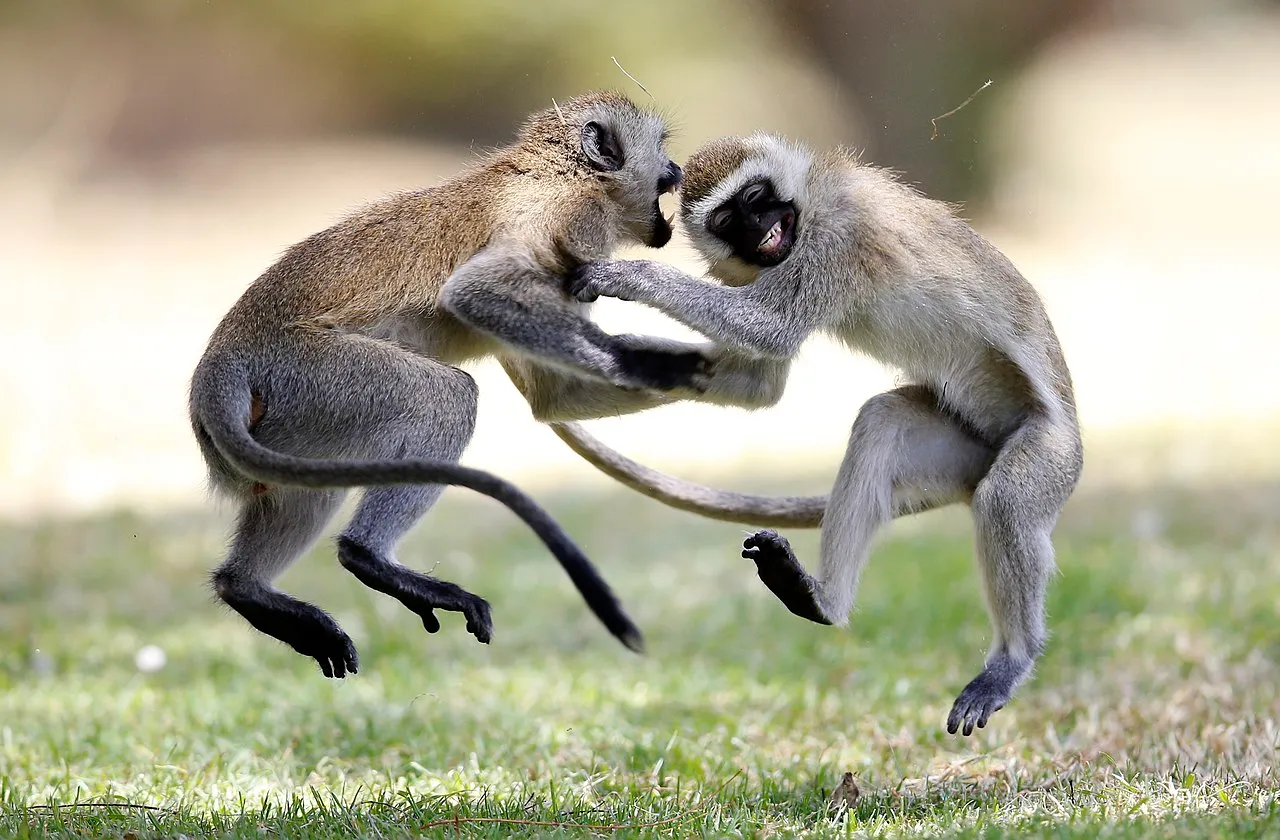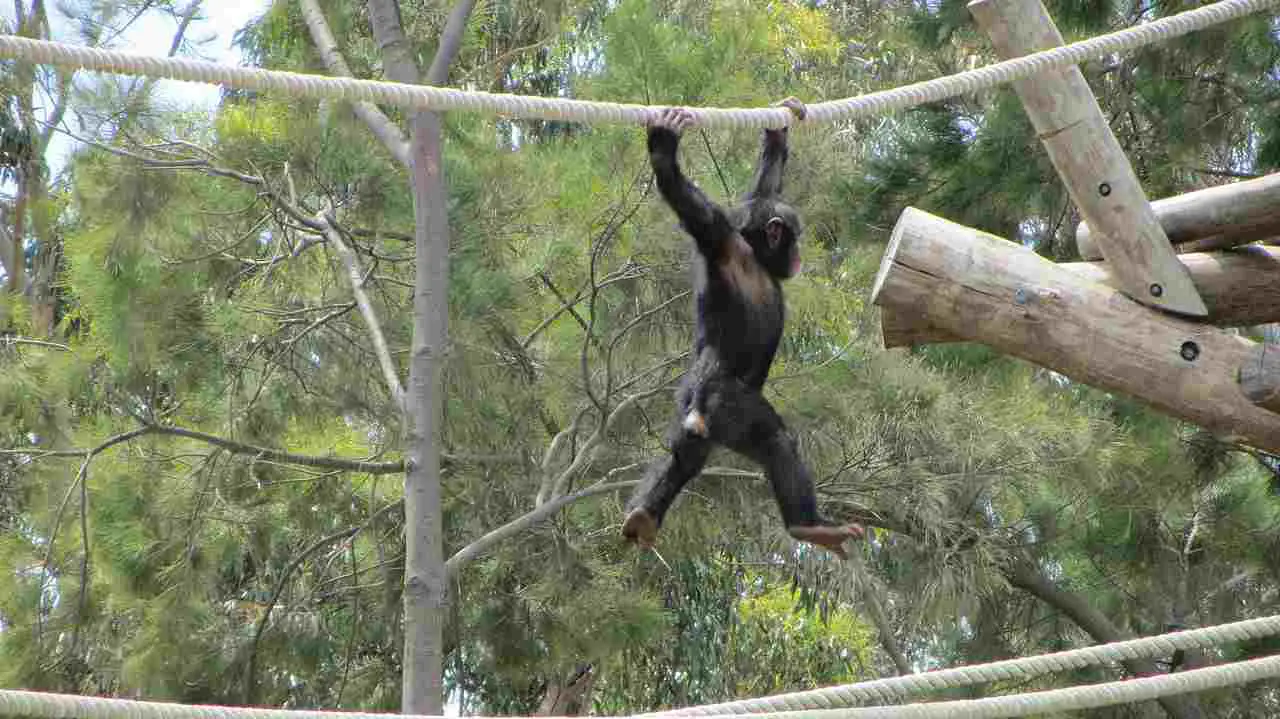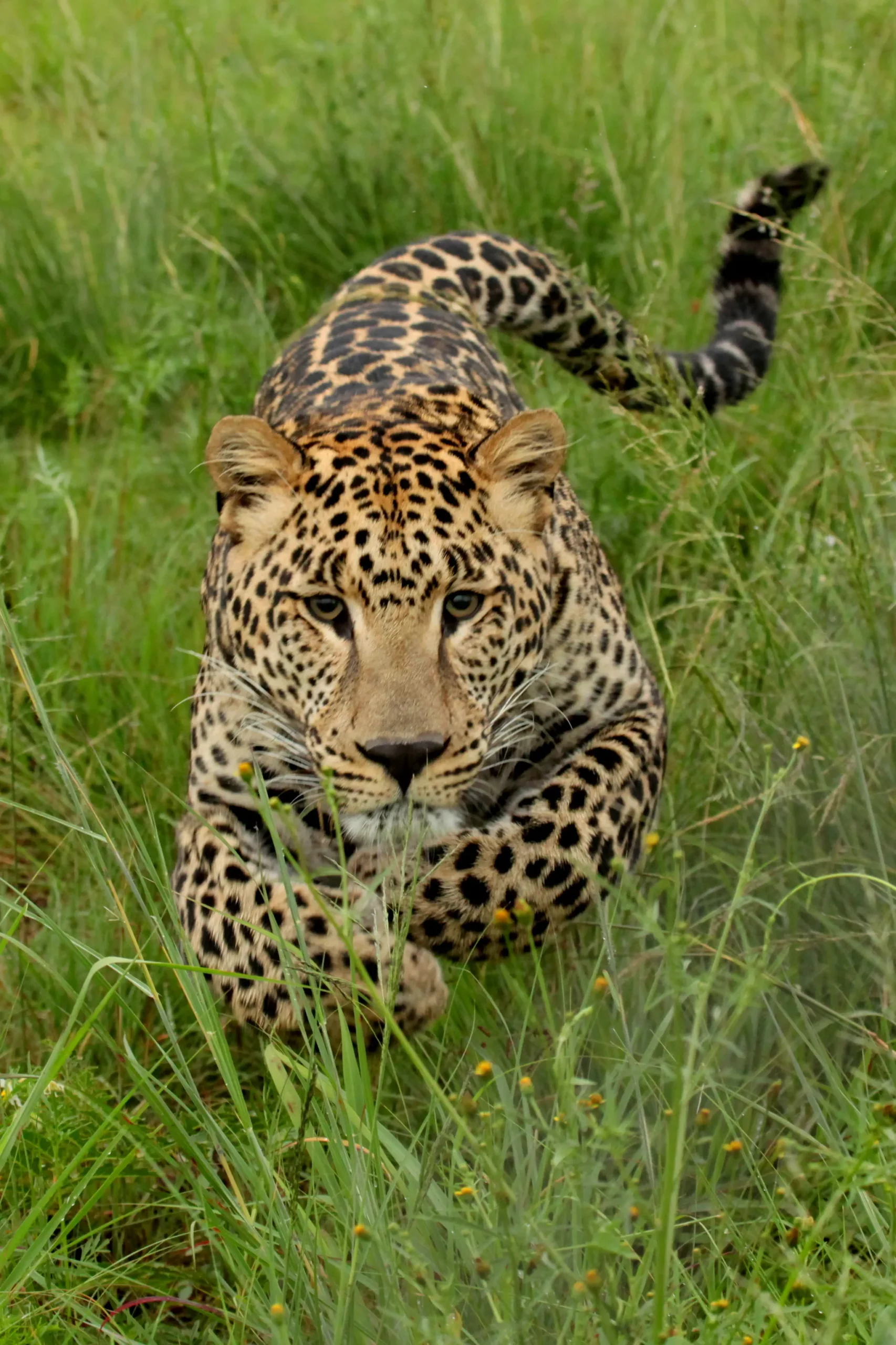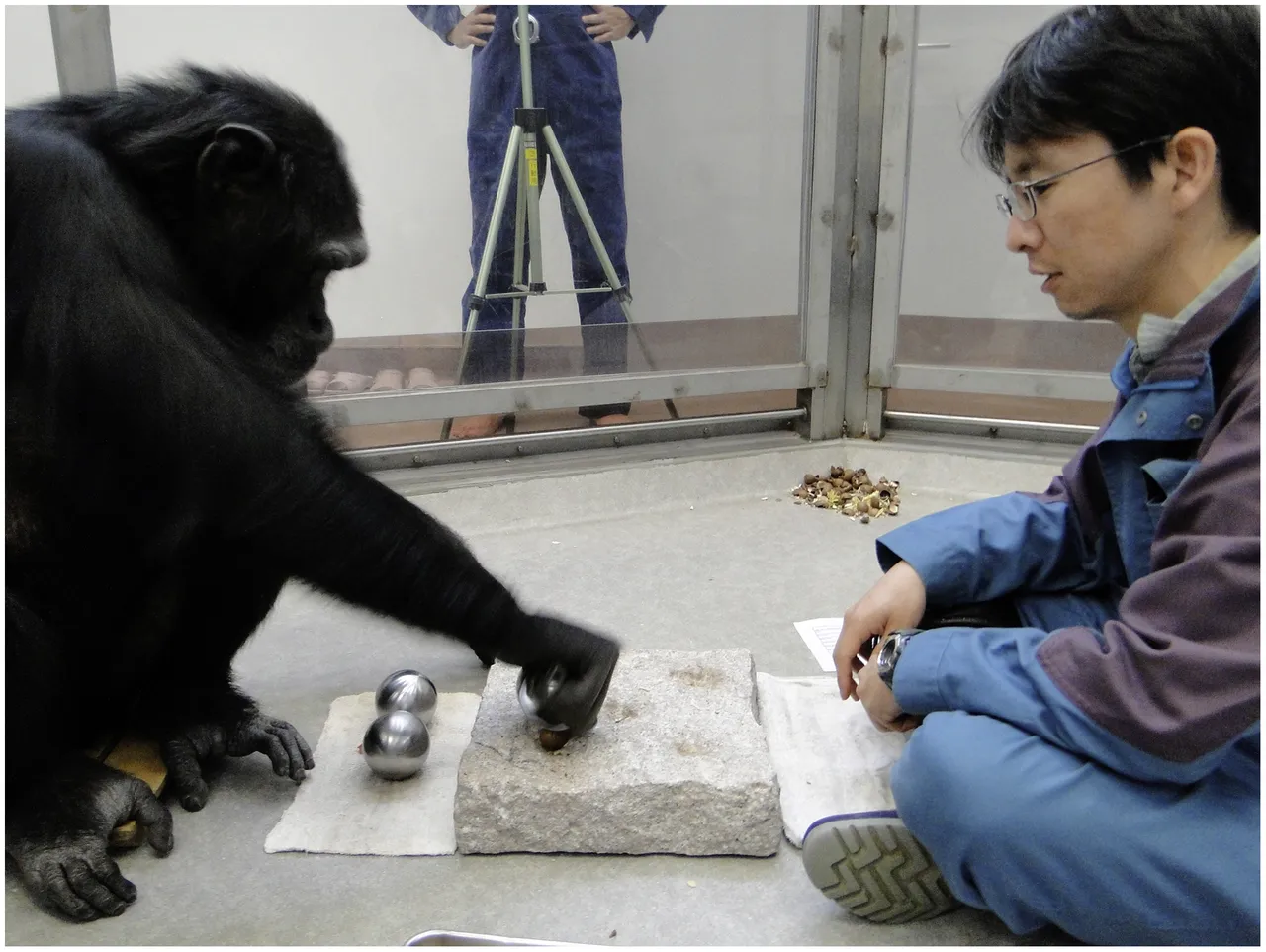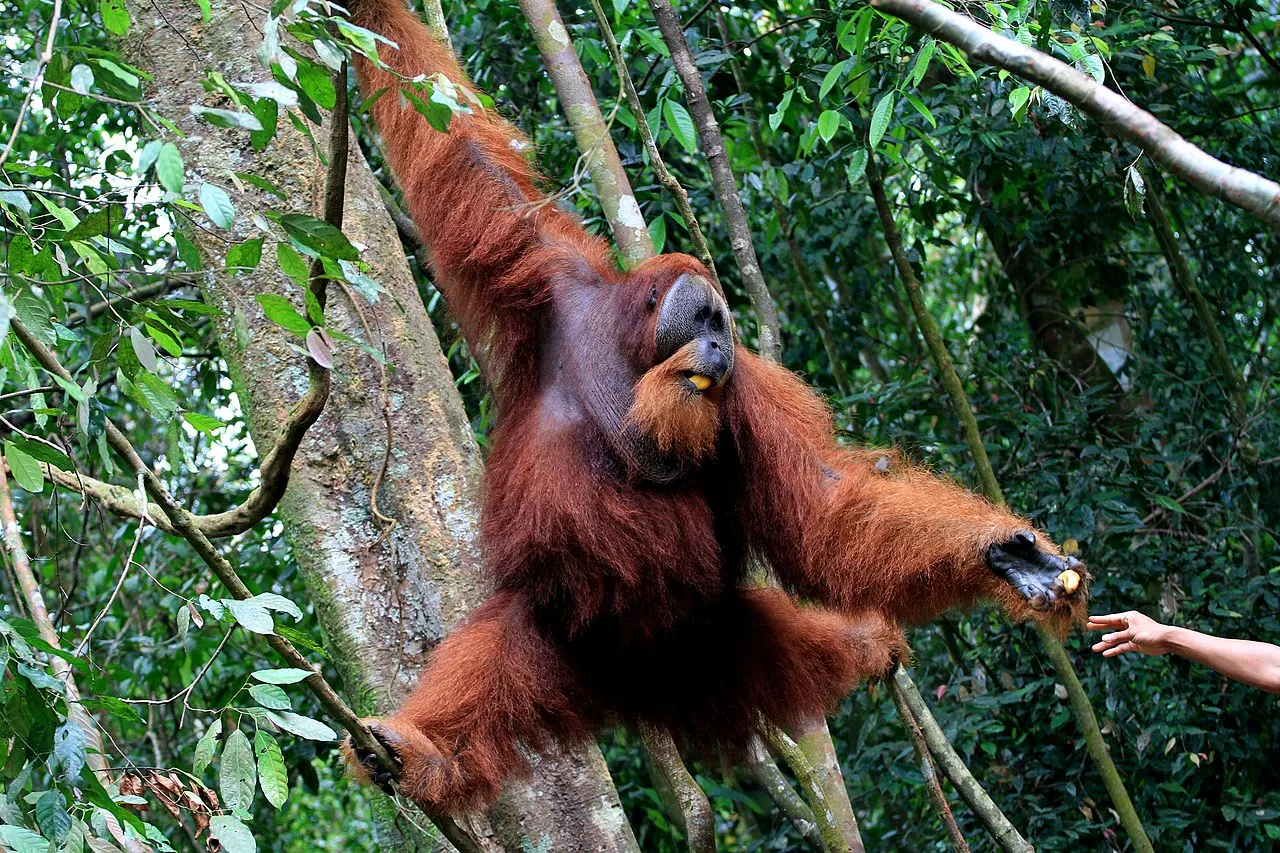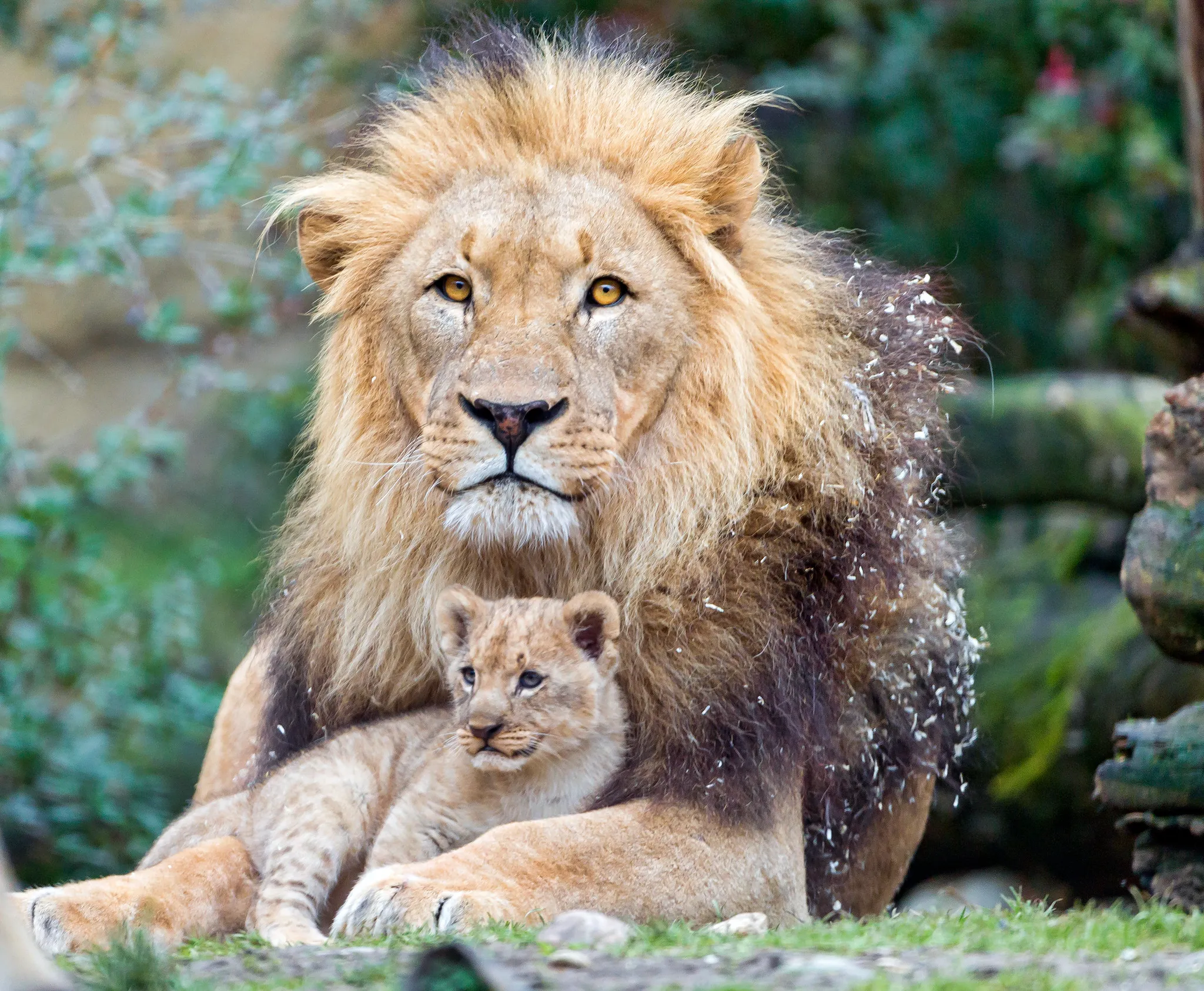Chimpanzee Vs Ape Size, Weight, Overall Comparison
Exploring the distinctions between chimpanzees and other apes unravels a tapestry of variations in size, strength, and intelligence. While all apes share common characteristics, subtle differences set chimpanzees apart from their primate counterparts.
I. Size and Strength Disparity:
– Chimpanzees, part of the Pan troglodytes species, exhibit a weight range of 88-157 pounds. In contrast, gibbon apes tend to weigh between 15-20 pounds, underlining the considerable size difference. Gorillas, also considered apes, are known to be 4-6 times stronger than chimpanzees.

II. Intelligence Comparison:
– Greater apes, including chimpanzees, demonstrate notable problem-solving abilities. Gibbon apes, despite their smaller size, can solve puzzles quickly. The intelligence spectrum across apes showcases nuanced variations in cognitive capabilities.
III. Taxonomic Classification:
– All apes, encompassing chimpanzees, gibbons, gorillas, orangutans, and bonobos, fall under the category of primates. While they share common ancestry, each species has evolved distinct characteristics.
IV. Ape vs. Monkey Distinction:
– Monkeys, identifiable by the presence of tails, are differentiated from apes, which lack tails. The absence of a tail is a key characteristic distinguishing chimpanzees and other apes from monkeys.
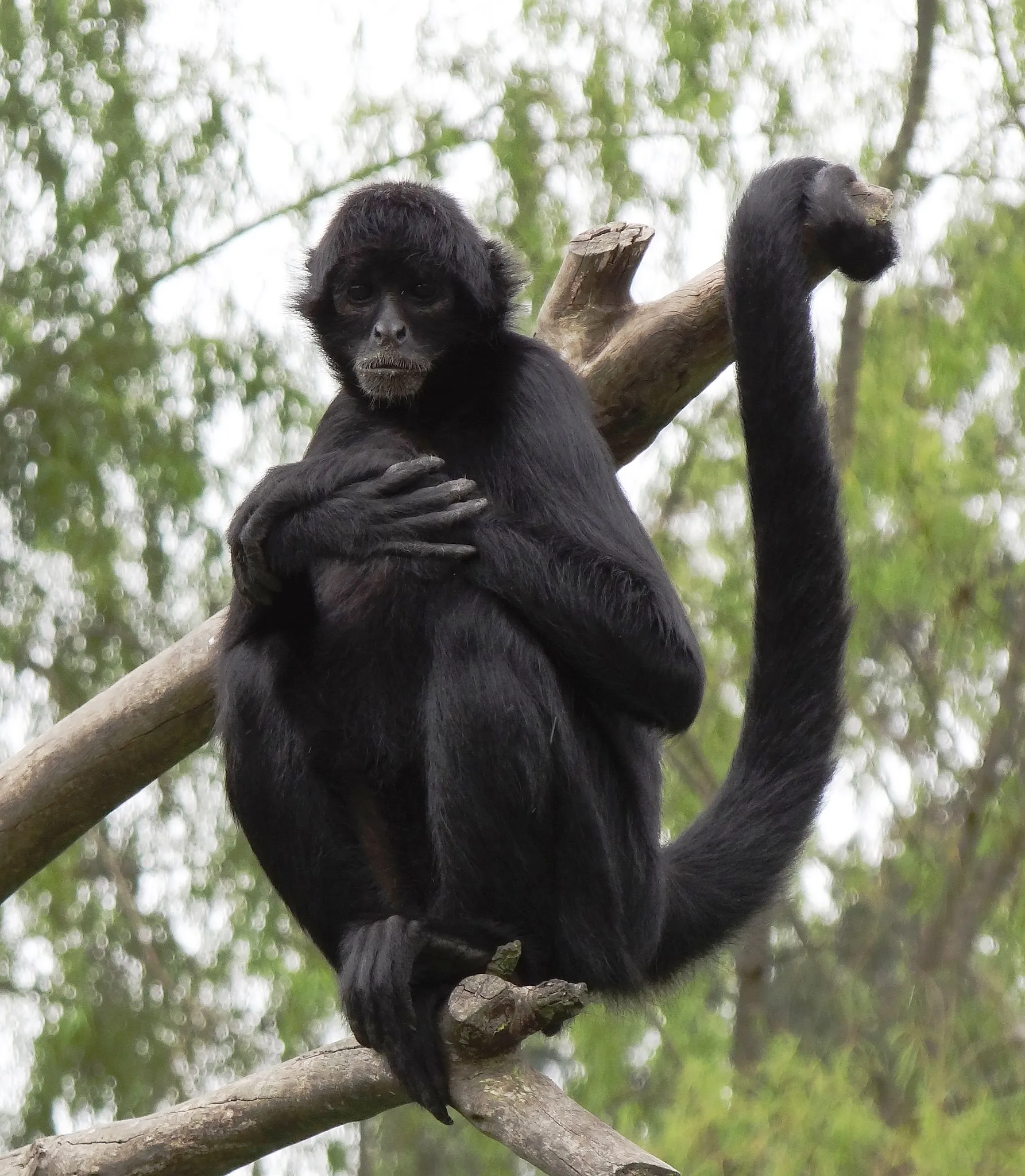
V. Visualizing Differences:
– Chimpanzees, gorillas, and other apes have been visually categorized for easy recognition. The understanding of their differences extends beyond mere physical appearances to encompass behavioral and genetic distinctions.
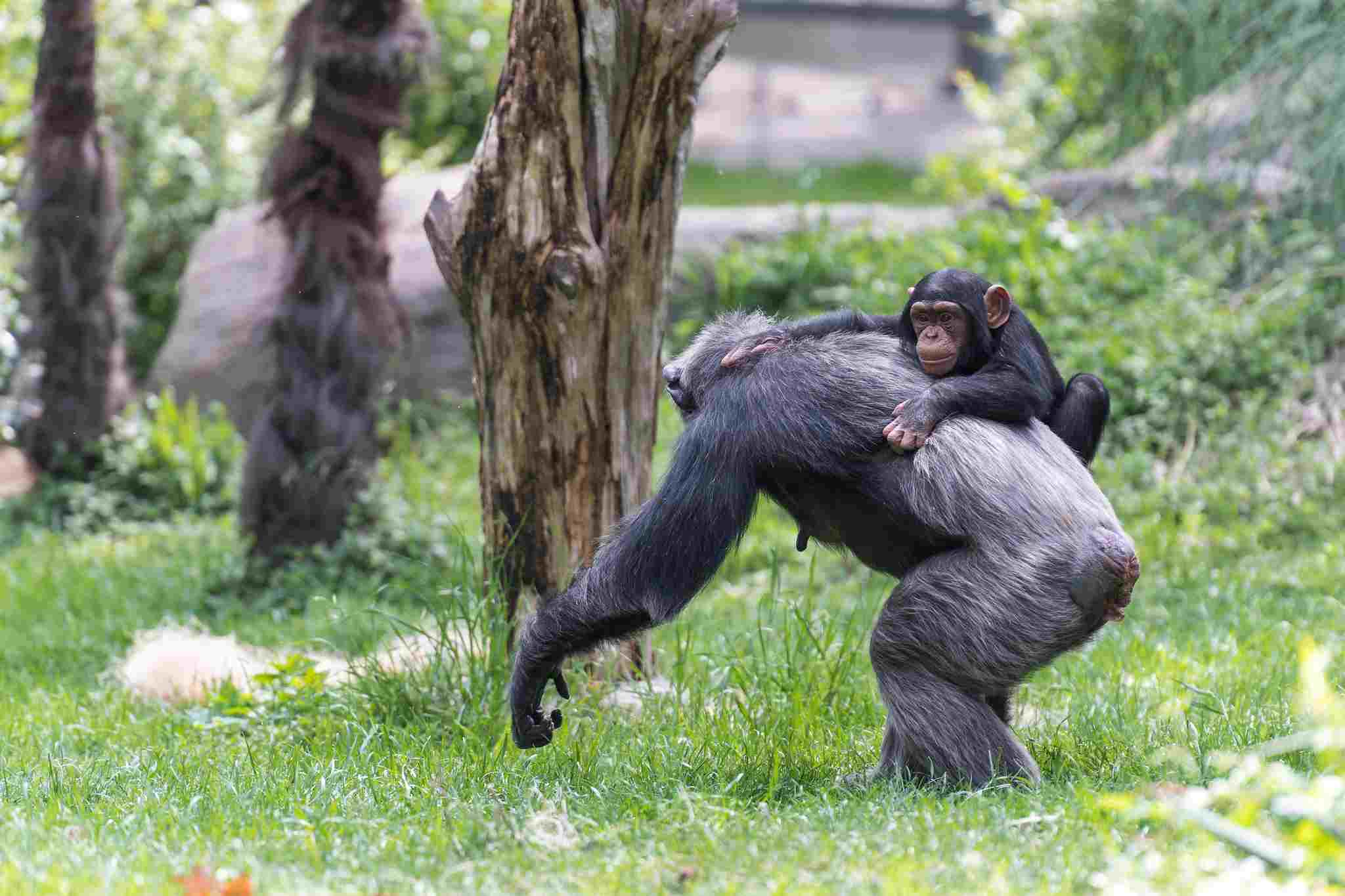
*Details of Comparison
| Criteria | Chimpanzee |
Other Apes (e.g., Gorillas, Orangutans, Bonobos)
|
| Taxonomy | Hominidae, Homininae, Hominini, Pan, P. troglodytes |
Hominidae, Homininae, Hominini (Species varies)
|
| Appearance | Coarse black hair, forward-facing eyes |
Diverse characteristics (e.g., Gorillas robust, Orangutans shaggy)
|
| Size | 3-4 feet tall (males), smaller females |
Varies, e.g., Gorillas larger, Orangutans substantial
|
| Weight | 40-70 kg (males), lighter females |
Varies, e.g., Gorillas up to 200 kg
|
| Bite Force (PSI) | 1,200-1,500 PSI |
Varies among species
|
| Offensive Advantages | Canines, agility, tool use |
Strength, physique, displays (e.g., Gorillas)
|
| Defensive Advantages | Agility, climbing, group defense |
Strength, intimidating displays (e.g., Gorillas)
|
| Speed | Up to 40 km/h |
Varies among species
|
| Agility | Highly agile, arboreal and terrestrial |
Varies among species (e.g., Gibbons remarkable)
|
| Senses | Well-developed sight, hearing |
Sensory abilities vary among species
|
| Physical Capacity | High endurance, problem-solving, tool use |
Varies among species
|
| Habitat & Region | Tropical rainforests and savannas in Central & West Africa |
Diverse habitats, e.g., Gorillas in Central & East Africa, Orangutans in Borneo & Sumatra
|
| Tracks | Varied tracks, knuckle walking, bipedalism |
Tracks reveal movement patterns and terrain adaptation
|
| Lifespan | 40-50 years (wild) |
Lifespan varies, e.g., Gorillas 35-40 years (wild)
|
| Feeding | Omnivorous (fruits, leaves, insects) |
Diet varies, e.g., Gorillas herbivores, Orangutans primarily fruit
|
| Intelligence | Highly intelligent, problem-solving, tool use |
Varies, some exhibit problem-solving (e.g., Orangutans)
|
| Social Behavior | Complex hierarchical groups, cooperation |
Social structures vary, e.g., Bonobos more egalitarian
|
| Reproduction | Polygamous mating, dominance hierarchy |
Varies, e.g., Gorillas polygynous, Orangutans more solitary
|
| Parental Behavior | Strong maternal care, protection |
Similar, strong maternal care across species
|
| Proximity to Humans | May come into proximity, potential conflicts |
Proximity varies, e.g., Orangutans facing habitat encroachment
|
| Behavior Toward Humans | Can exhibit aggression, curiosity |
Behaviors vary, some reclusive, some curious or aggressive
|
| Danger to Humans | Can be dangerous if provoked |
Generally less dangerous compared to chimpanzees
|
| Precautions | Caution advised, maintain safety distance |
Similar precautions, respect their space
|
| Conservation Status | Generally endangered |
Varies among species, facing threats like habitat destruction and poaching
|
1. Taxonomy:
Chimpanzee:
Family: Hominidae
Subfamily: Homininae
Tribe: Hominini
Genus: Pan
Species: Pan troglodytes
Other Apes (e.g., Gorillas, Orangutans, Bonobos):
Family: Hominidae
Subfamily: Homininae
Tribe: Hominini
Genus and Species vary based on the specific ape species (e.g., Gorillas belong to the genus Gorilla, species Gorilla gorilla or Gorilla beringei).
Both chimpanzees and other apes belong to the same family and subfamily but differ at the genus and species levels.
2. Appearance:
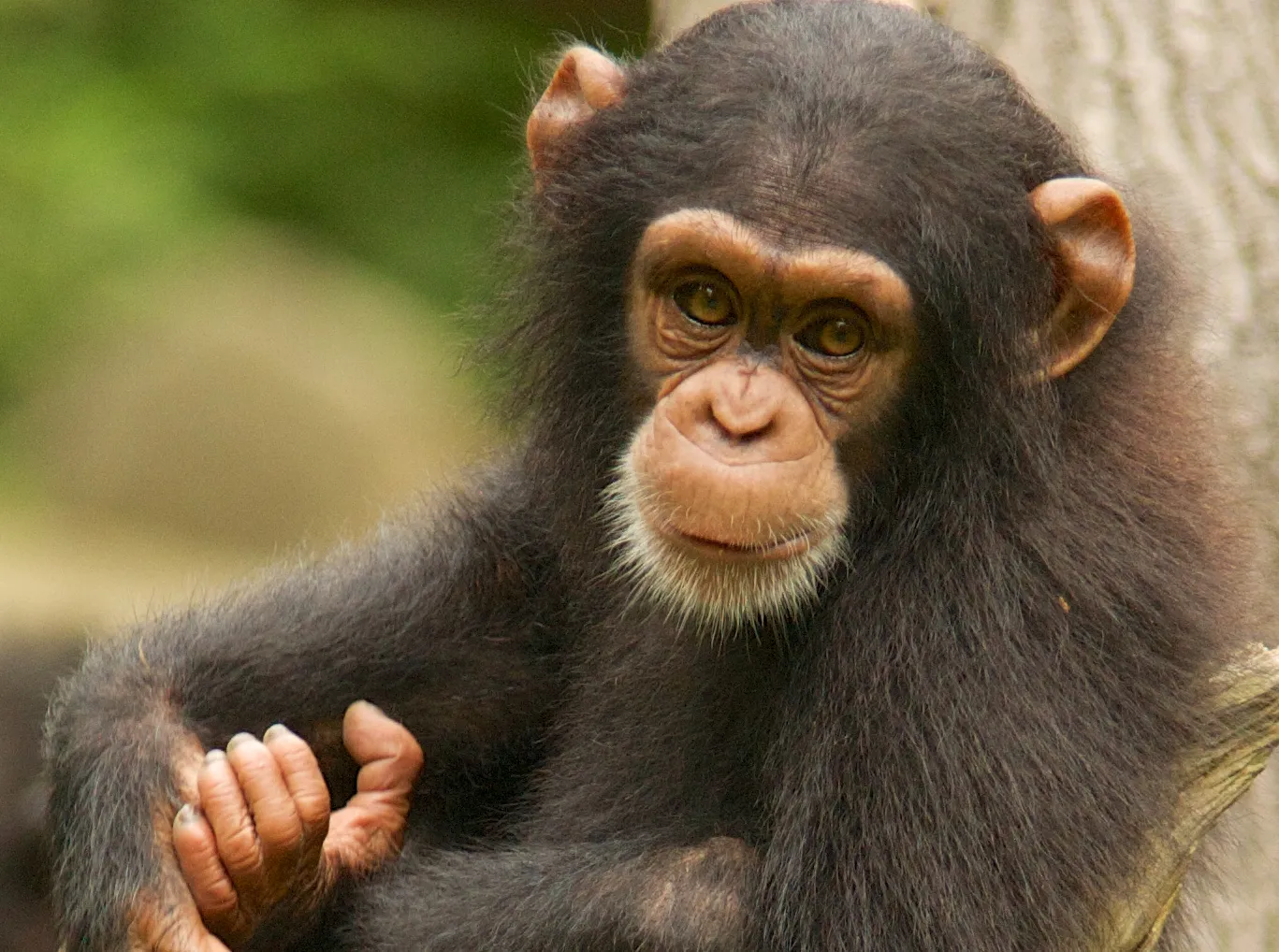
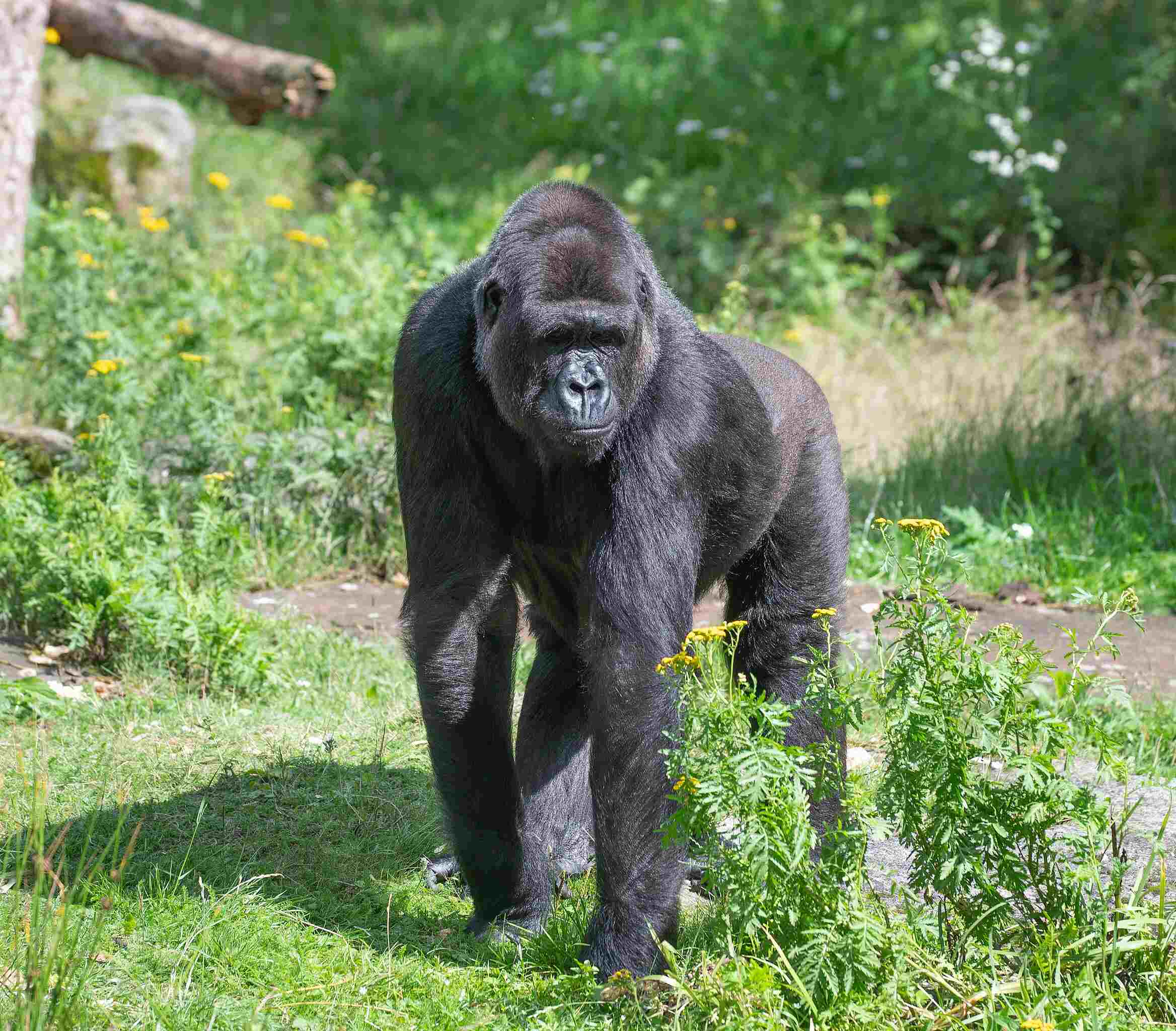
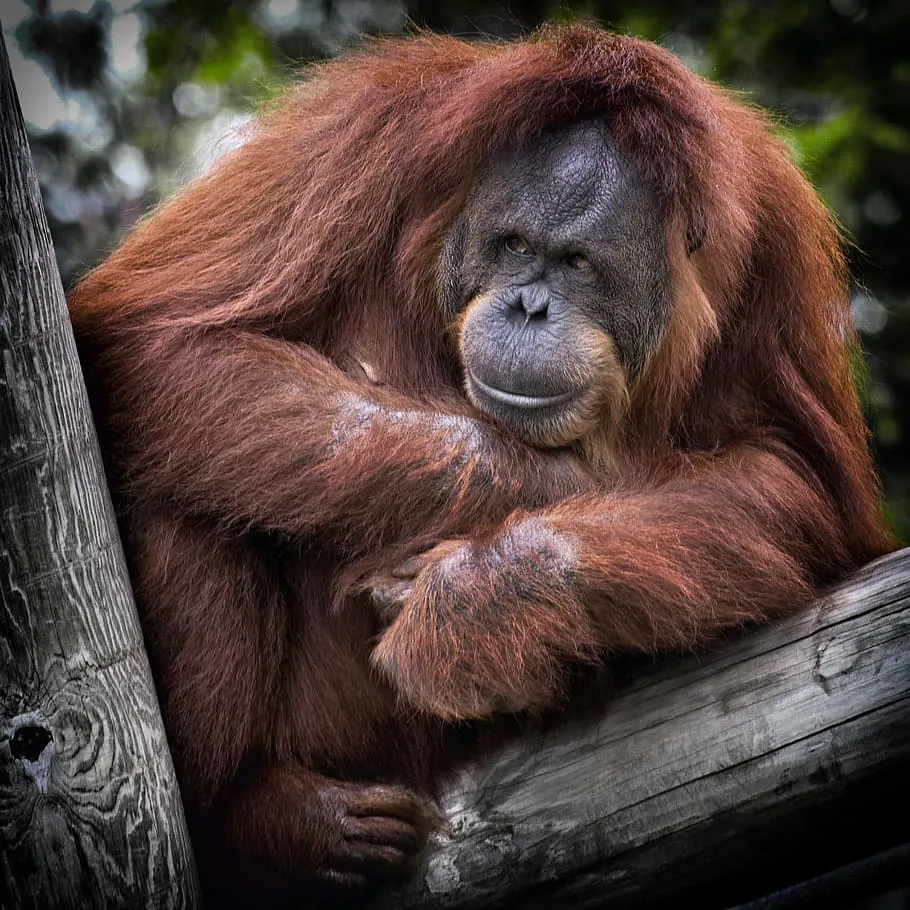
Chimpanzee:
Covered in coarse black hair, with bare facial skin.
Prominent ears, forward-facing eyes, and a prominent brow ridge.
Limb proportions allow for both arboreal and terrestrial locomotion.
Other Apes (e.g., Gorillas, Orangutans, Bonobos):
Diverse appearances based on species.
Gorillas: Large and robust with a pronounced sagittal crest.
Orangutans: Shaggy, long, reddish-brown hair and distinctive cheek pads.
Bonobos: Slender, with longer limbs compared to chimpanzees.
Ecological Implications:
Differences in appearance often reflect adaptations to specific ecological niches.
Fur color and body size may be linked to habitat types and temperature ranges.
3. Size:
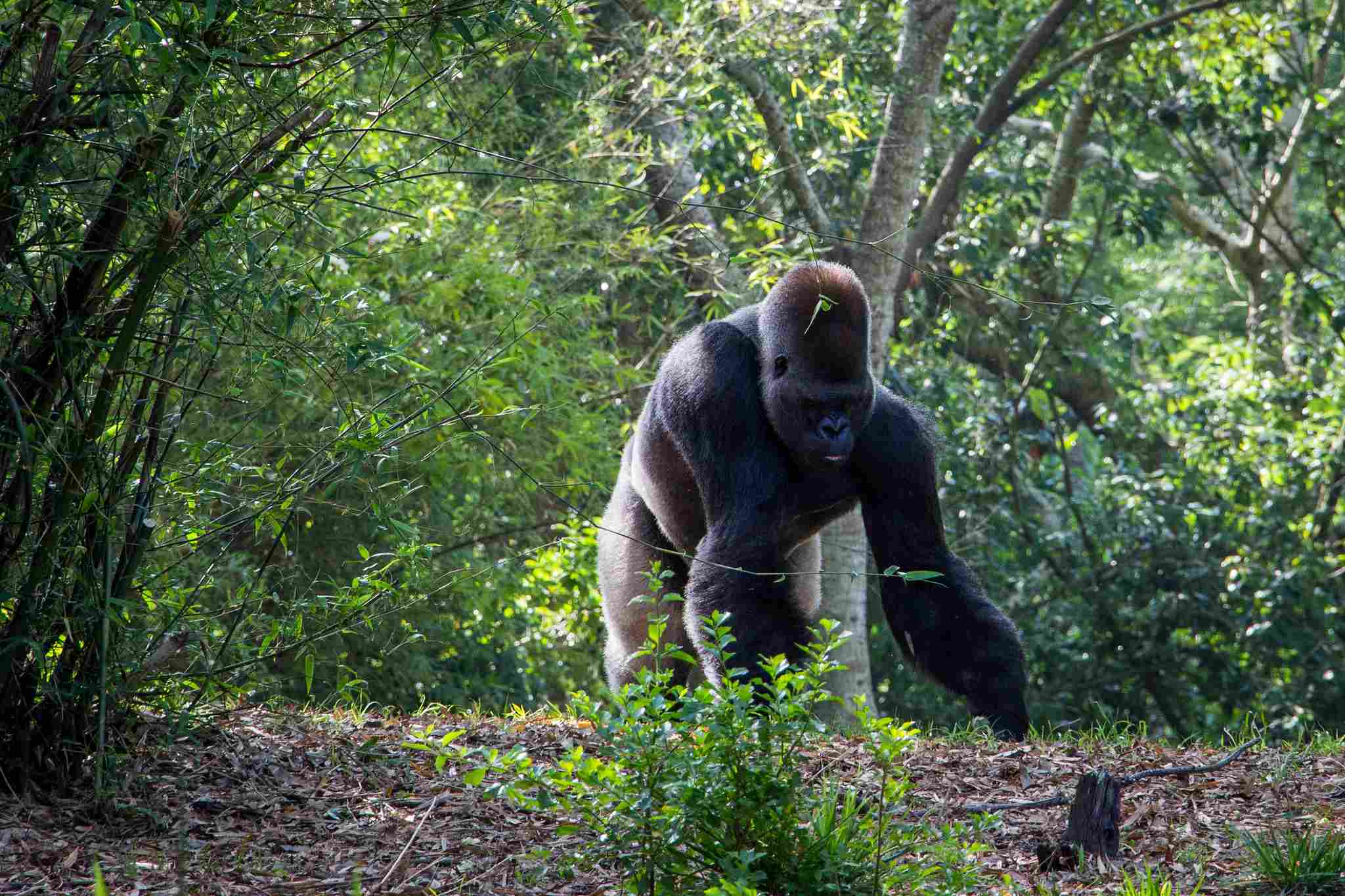
Chimpanzee:
Adult males: Around 3 to 4 feet tall.
Adult females: Slightly smaller than males.
Other Apes:
Sizes vary widely.
Gorillas: Much larger, with males reaching up to 5.6 feet in height.
Orangutans: Large, with males weighing up to 200 kg.
Ecological Implications:
Size differences may influence dietary needs, social structures, and overall ecological roles within their habitats.
4. Weight:
Chimpanzee:
Adult males: Around 40 to 70 kg.
Adult females: Generally weigh less than males.
Other Apes:
Weight varies among species.
Gorillas: Males can weigh up to 200 kg.
Orangutans: Males weigh around 66 to 87 kg.
Ecological Implications:
Weight is linked to factors such as diet, locomotion, and energy requirements within their respective environments.
5. Bite Force (PSI – Pounds per Square Inch):
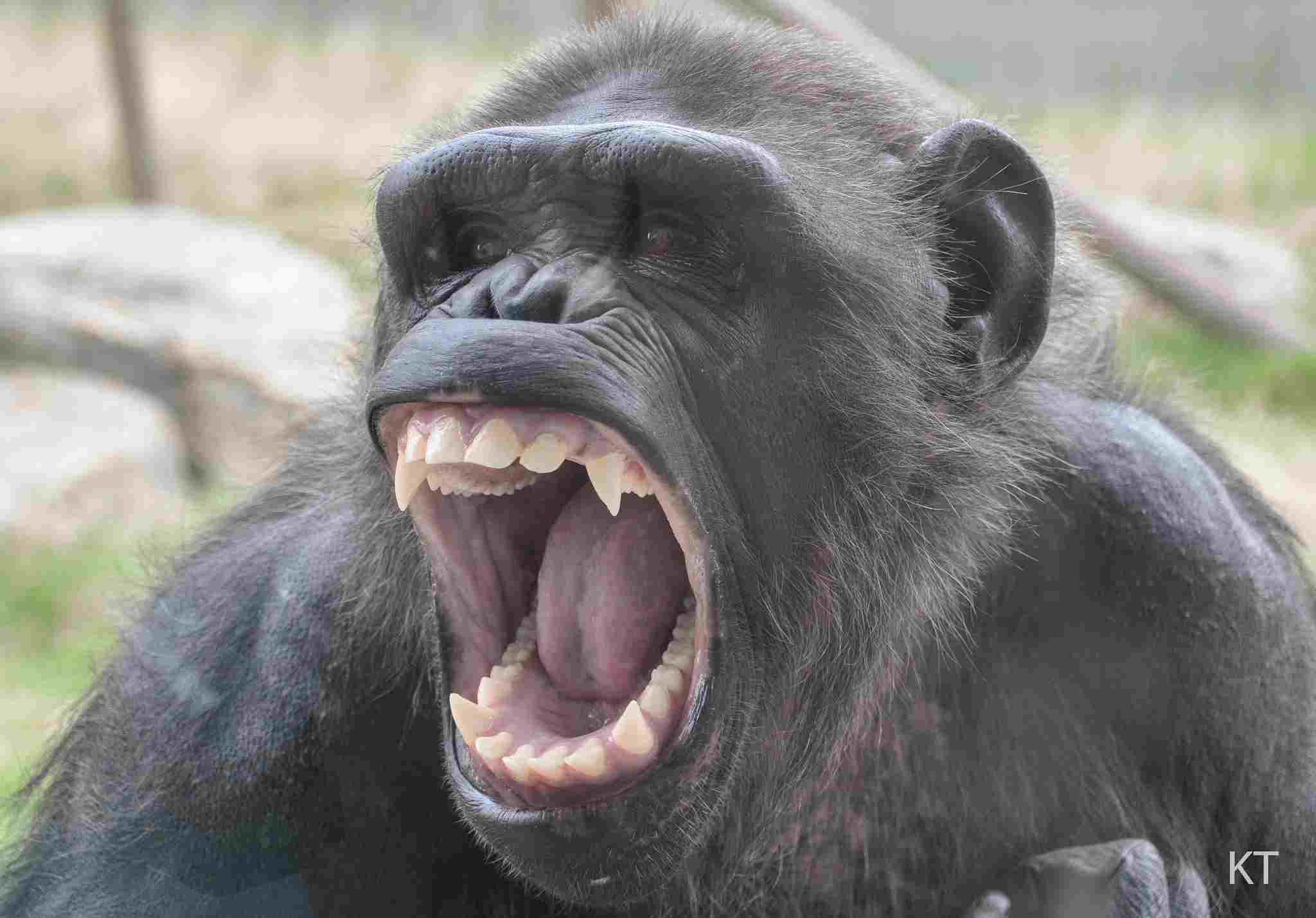

Chimpanzee:
Estimated to have a bite force of around 1,200 to 1,500 PSI.
Other Apes:
Bite force varies among species.
Gorillas: Have a powerful bite force, essential for their herbivorous diet.
Ecological Implications:
Bite force is related to feeding habits, dominance within social structures, and adaptations to different food sources.
6. Physical Offensive Advantages:
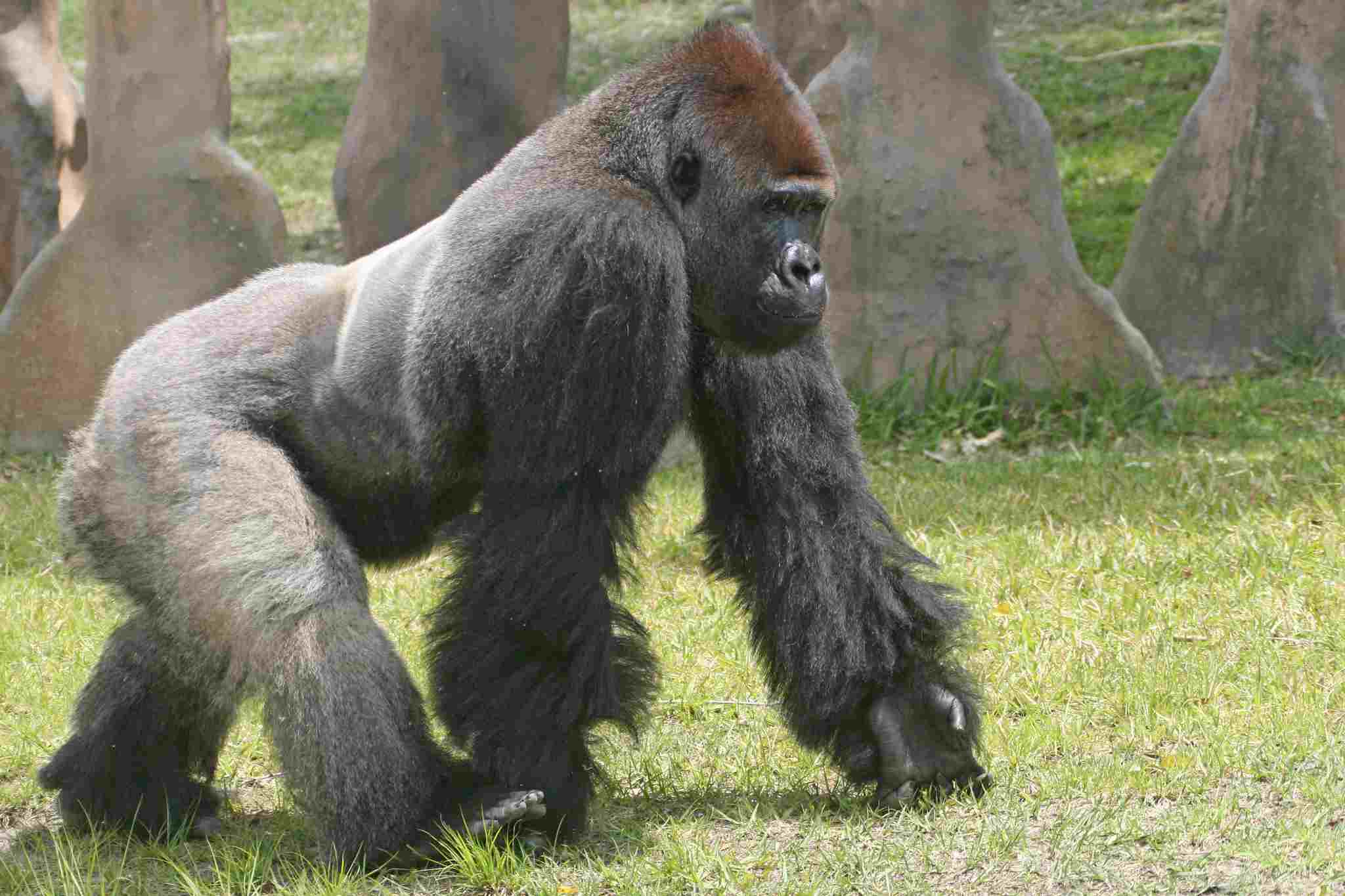
Chimpanzee:
Well-developed canines and strong bite.
Agility and tool use enhance offensive capabilities.
Other Apes:
Gorillas: Powerful physique and upper body strength.
Orangutans: Strong arms for climbing and potential displays of dominance.
Ecological Implications:
Offensive advantages are often adapted to specific ecological roles, including competition for resources and dominance within social structures.
7. Physical Defensive Advantages:
Chimpanzee:
Agility and climbing ability for evasion.
Social structure provides group defense against predators.
Other Apes:
Gorillas: Powerful build and intimidating displays.
Bonobos: Use social bonds and cooperation for defense.
Ecological Implications:
Defensive strategies are shaped by the types of predators present in their habitats and the dynamics of intra-species competition.
8. Speed (Km/hour or Mile/hour):
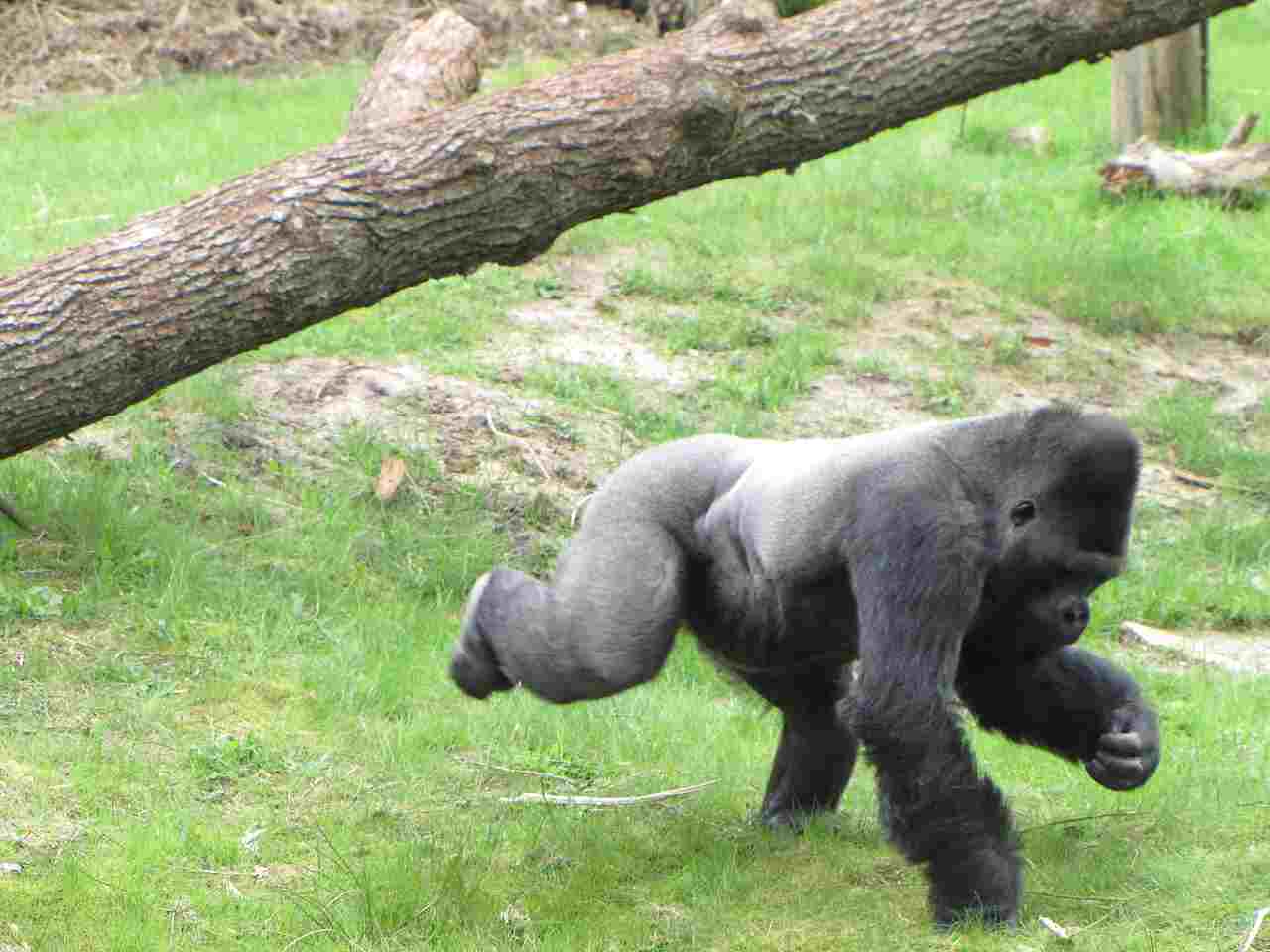
Chimpanzee:
Can reach speeds of up to 40 km/h (25 mph) in short bursts.
Other Apes:
Speed varies among species.
Orangutans: Not as fast; adapted for a more deliberate and arboreal movement.
Ecological Implications:
Speed is linked to locomotion patterns, with variations reflecting their reliance on different modes of travel within their habitats.
9. Agility:
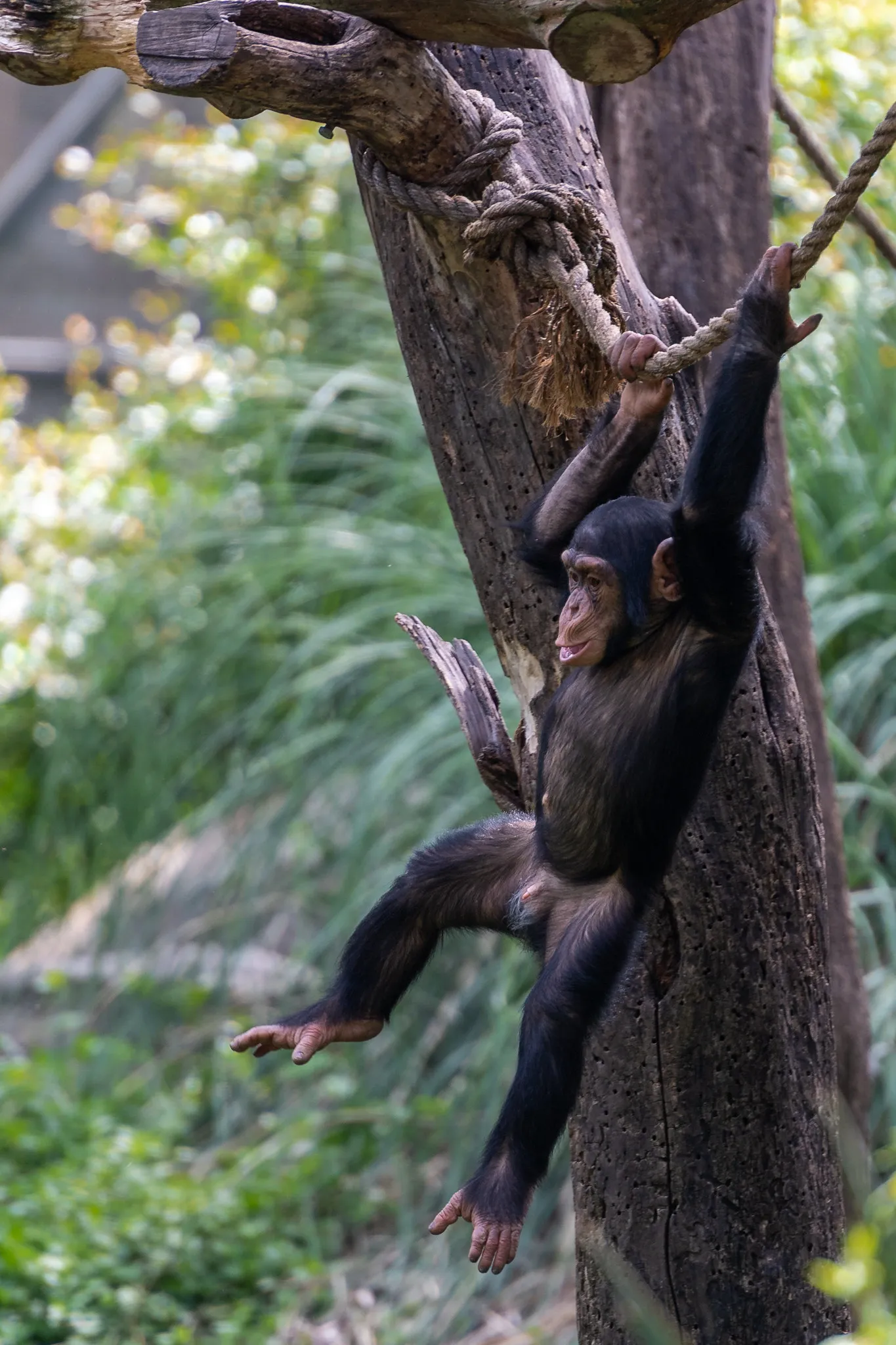
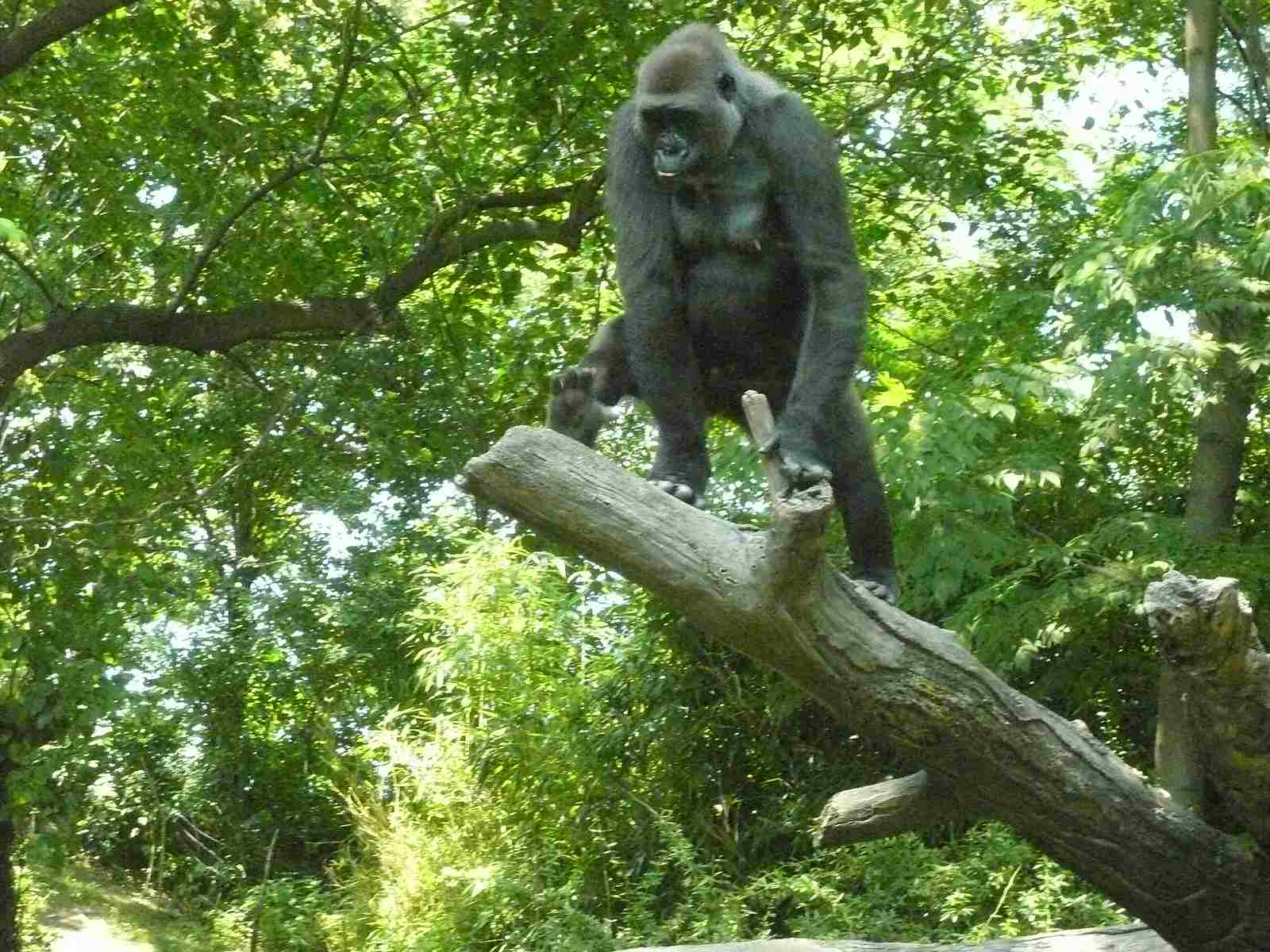
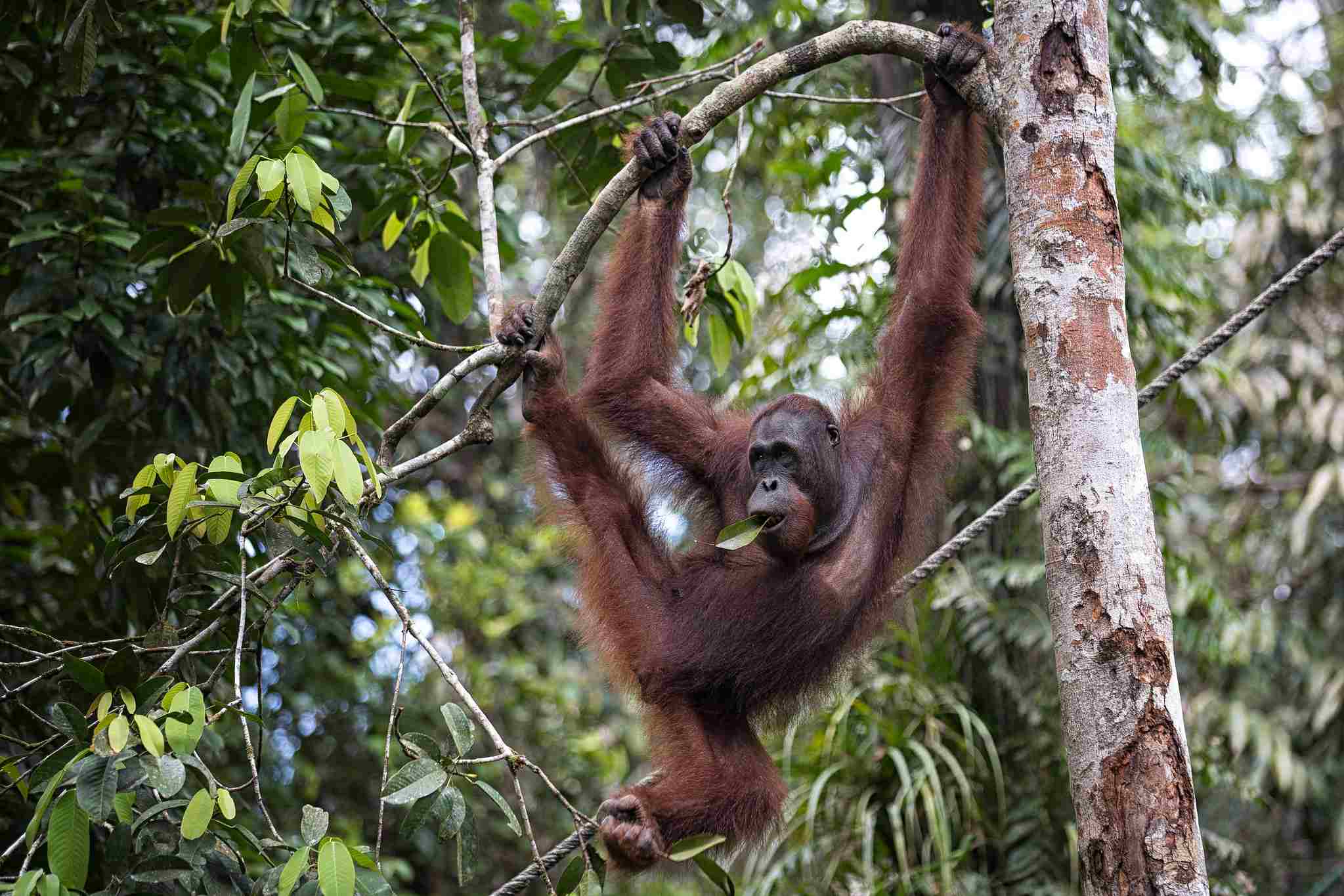
Chimpanzee:
Exceptional agility, with the ability to swing through trees and navigate complex environments.
Other Apes:
Agility varies among species.
Gibbons, a type of small ape, are known for their remarkable agility.
Ecological Implications:
Agility is crucial for navigating diverse habitats, securing food, and avoiding predators. It reflects adaptations to the specific challenges of their environments.
10. Senses:
Chimpanzee:
Well-developed senses of sight and hearing.
Tactile communication through grooming is significant.
Other Apes:
Sensory abilities vary.
Orangutans rely heavily on vision for navigation.
Ecological Implications:
Sensory adaptations are linked to their ecological niche, influencing how they locate food, communicate, and navigate their environment.
11. Overall Physical Capacity:
Chimpanzee:
High physical endurance.
Capable of complex problem-solving and tool use.
Other Apes:
Physical capacities vary.
Orangutans are known for their strength and patience.
Ecological Implications:
Overall physical capacity contributes to their ability to exploit resources, navigate their environment, and compete within their ecological niche.
12. Habitat Preference(s) and Geographic Region:
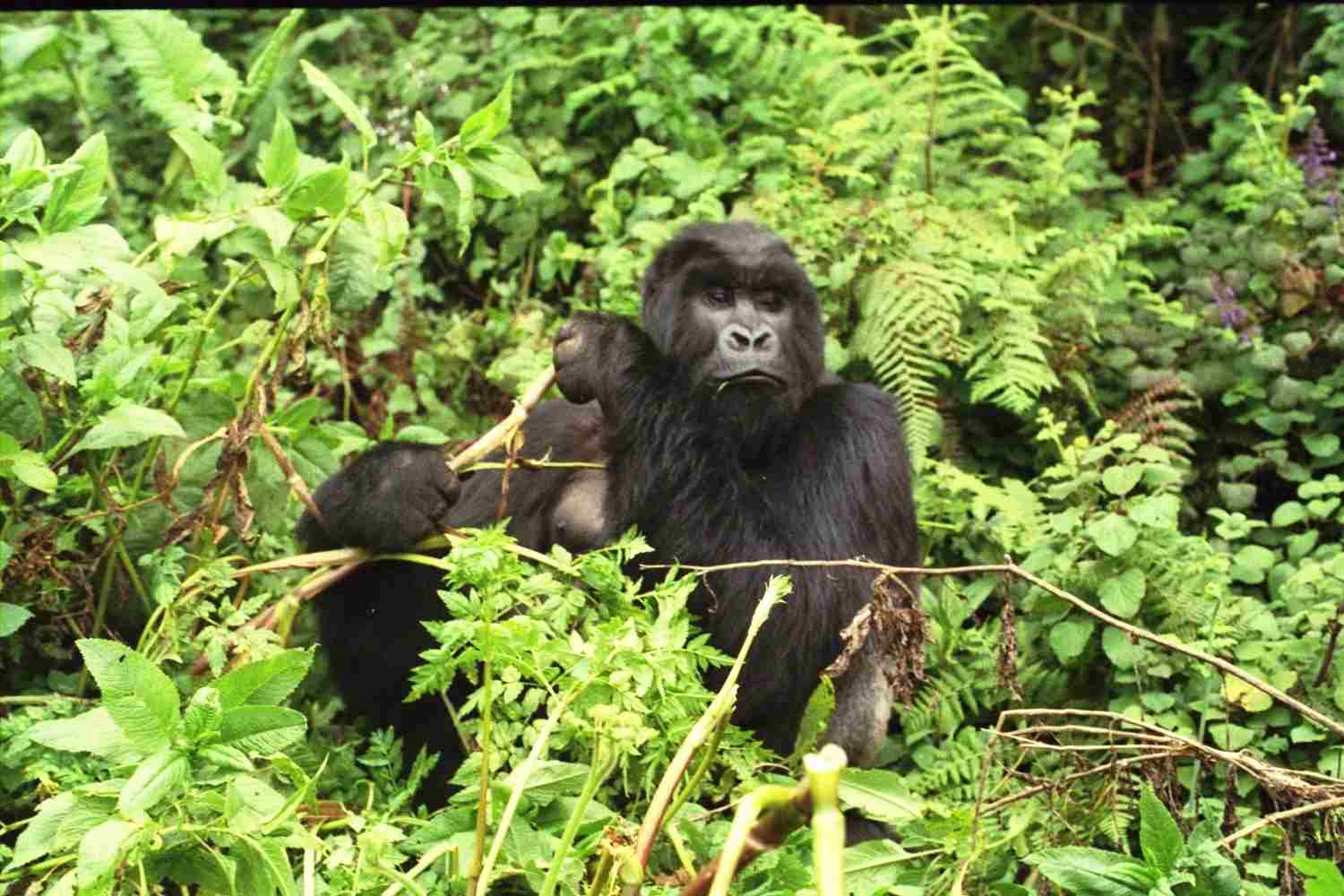
Chimpanzee:
Found in tropical rainforests and savannas of Central and West Africa.
Other Apes:
Diverse habitats:
Gorillas inhabit forests of Central and East Africa.
Orangutans in rainforests of Borneo and Sumatra.
Bonobos in the dense forests of the Congo Basin.
Ecological Implications:
Habitat preferences are crucial for understanding their ecological roles and the conservation challenges they face.
13. Tracks:
Chimpanzee:
Varied tracks depending on locomotion, including knuckle walking and bipedalism.
Other Apes:
Gorillas and orangutans leave distinct tracks based on their unique modes of movement.
Ecological Implications:
Tracking provides insights into their movement patterns, social structure, and the types of terrain they inhabit.
14. Lifespan:
Chimpanzee:
In the wild, lifespan is typically around 40 to 50 years.
Other Apes:
Lifespan varies among species.
Gorillas can live up to around 35 to 40 years in the wild.
Ecological Implications:
Lifespan is influenced by factors such as predation, disease, and reproductive strategies, reflecting their adaptation to specific ecological conditions.
15. Mode of Feeding:
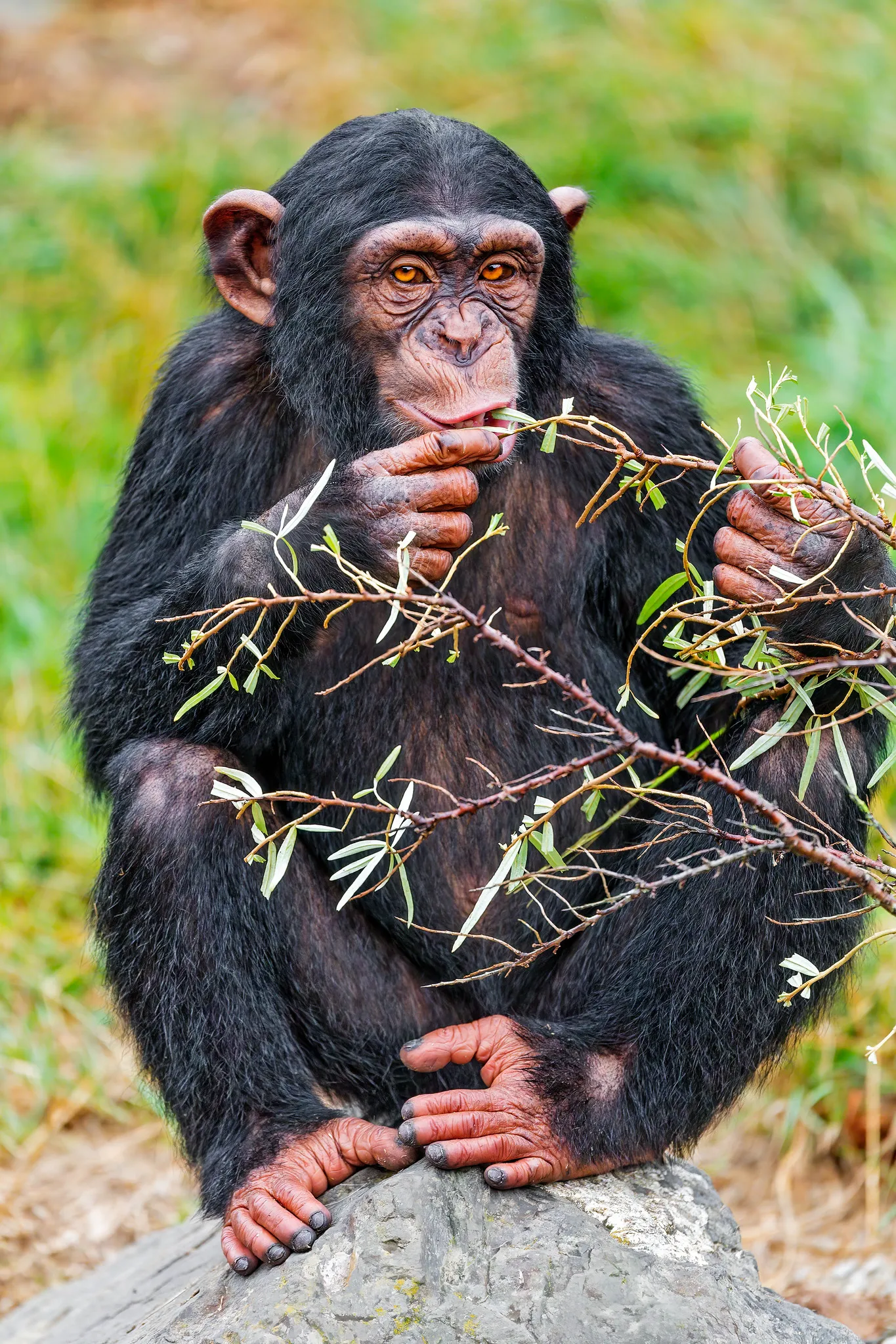
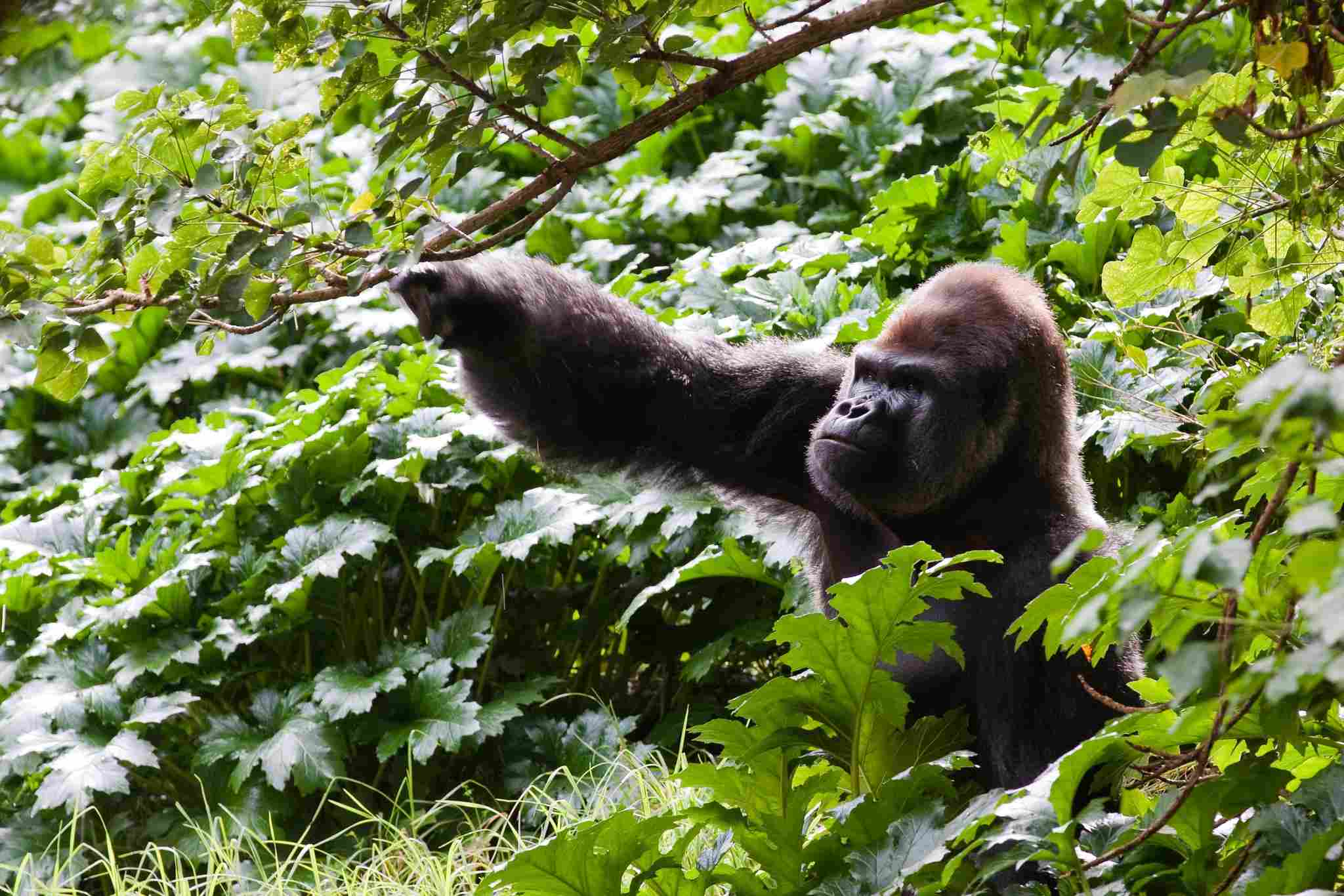
Chimpanzee:
Omnivorous diet, including fruits, leaves, insects, and occasional hunting of small mammals.
Other Apes:
Diet varies:
Gorillas are mainly herbivores, consuming leaves, stems, and fruits.
Orangutans primarily eat fruit but also consume leaves and insects.
Ecological Implications:
Feeding adaptations reflect the availability of resources in their habitats, influencing their role in the ecosystem.
16. Intelligence:
Chimpanzee:
Highly intelligent, capable of problem-solving, tool use, and complex social interactions.
Other Apes:
Varying degrees of intelligence among species.
Orangutans demonstrate problem-solving abilities.
Ecological Implications:
Intelligence plays a role in foraging strategies, social dynamics, and adaptation to environmental challenges.
17. Social Behavior:
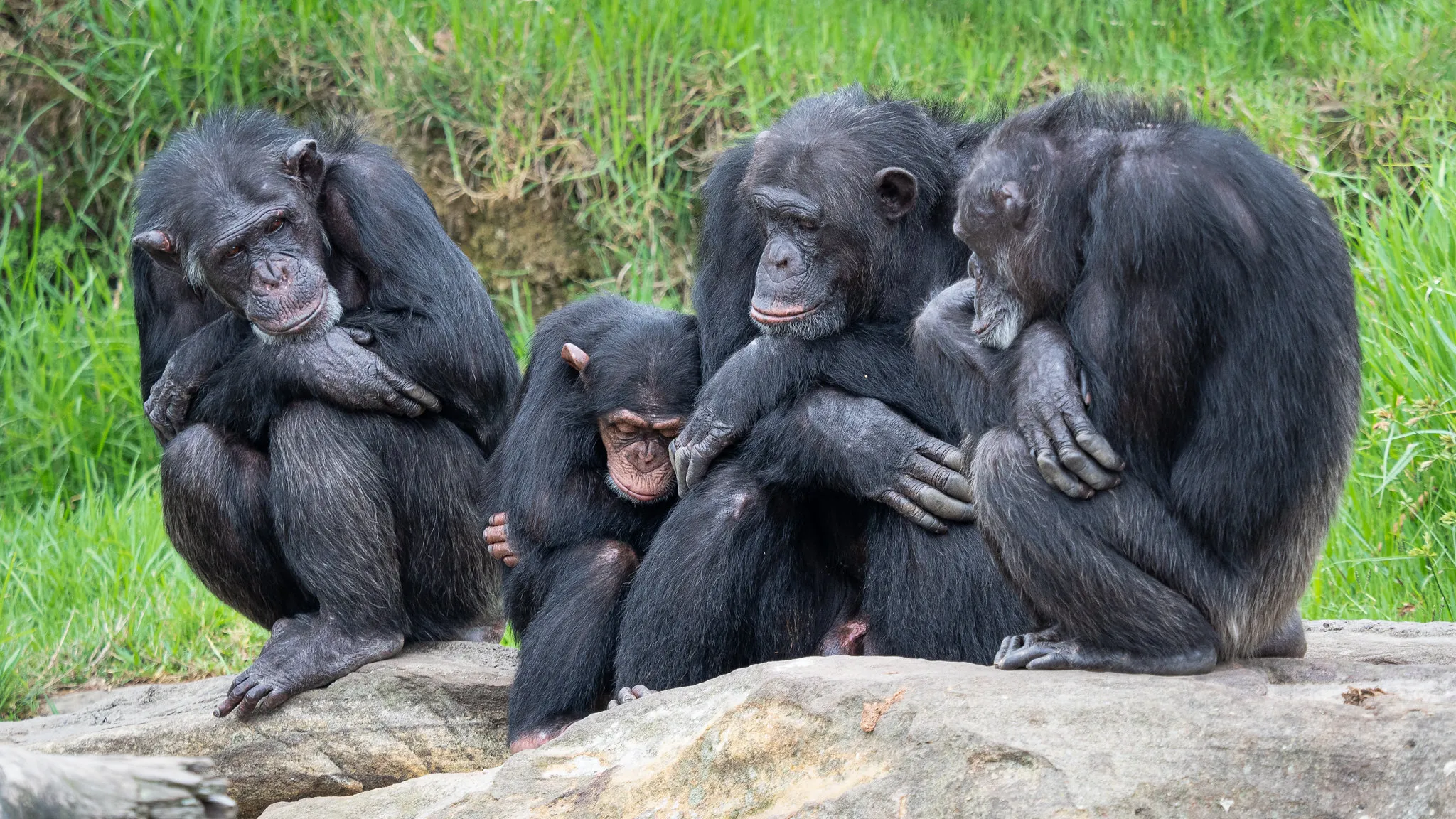
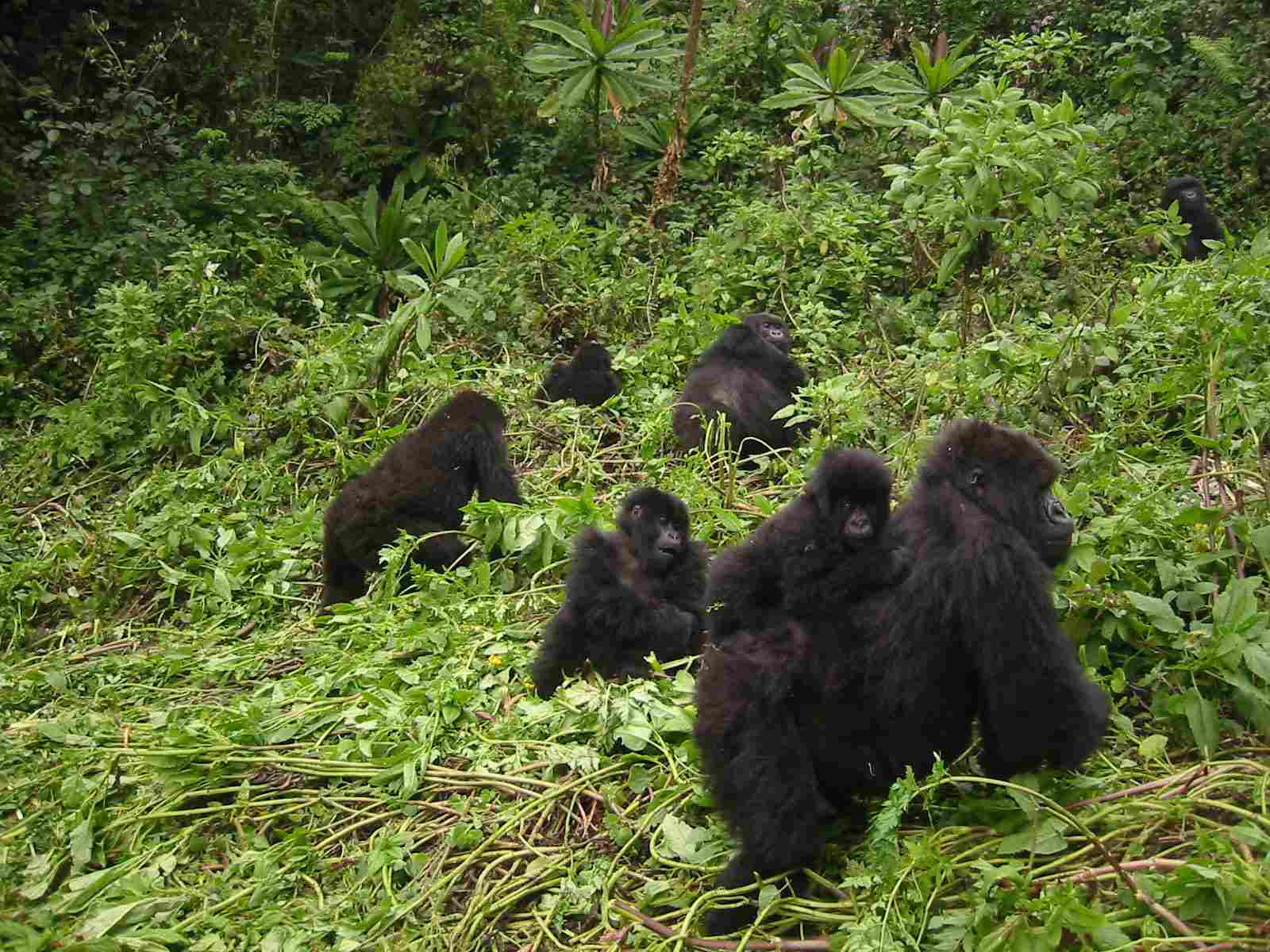
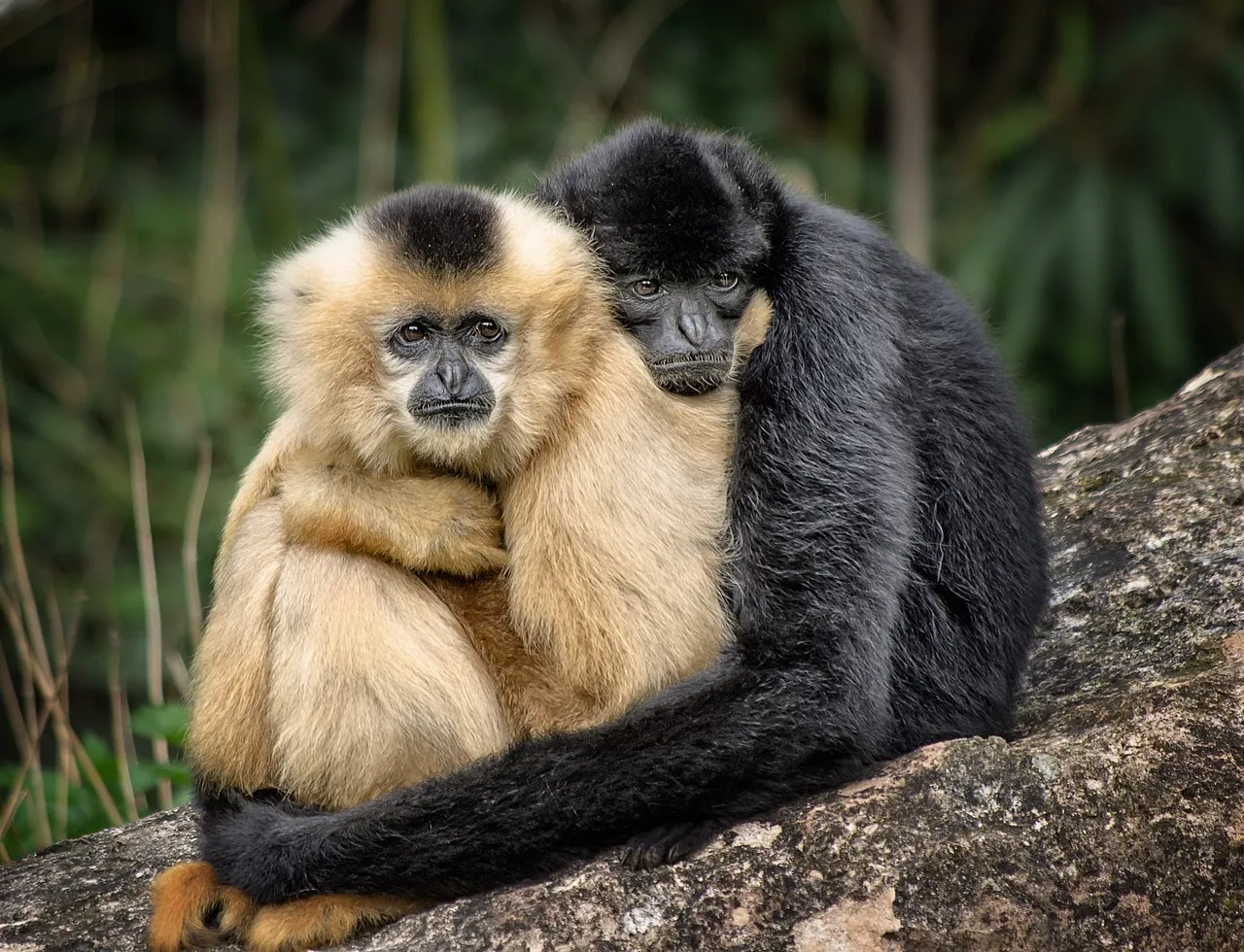
Chimpanzee:
Live in complex, hierarchical social groups with intricate communication and cooperation.
Other Apes:
Social structures vary:
Gorillas and gibbons live in cohesive family groups.
Bonobos exhibit more egalitarian social structures compared to chimpanzees.
Ecological Implications:
Social behavior is adapted to optimize resource use, minimize predation risks, and facilitate reproduction within their specific habitats.
18. Mode of Reproduction:
Chimpanzee:
Polygamous mating system with a dominance hierarchy among males.
Gestation period is around 230 to 240 days.
Other Apes:
Gorillas have a polygynous system with one dominant male.
Orangutans are largely solitary, with mating occurring when females are receptive.
Ecological Implications:
Reproductive strategies are adapted to the social structure, resource distribution, and ecological demands of their respective habitats.
19. Parental Behavior:
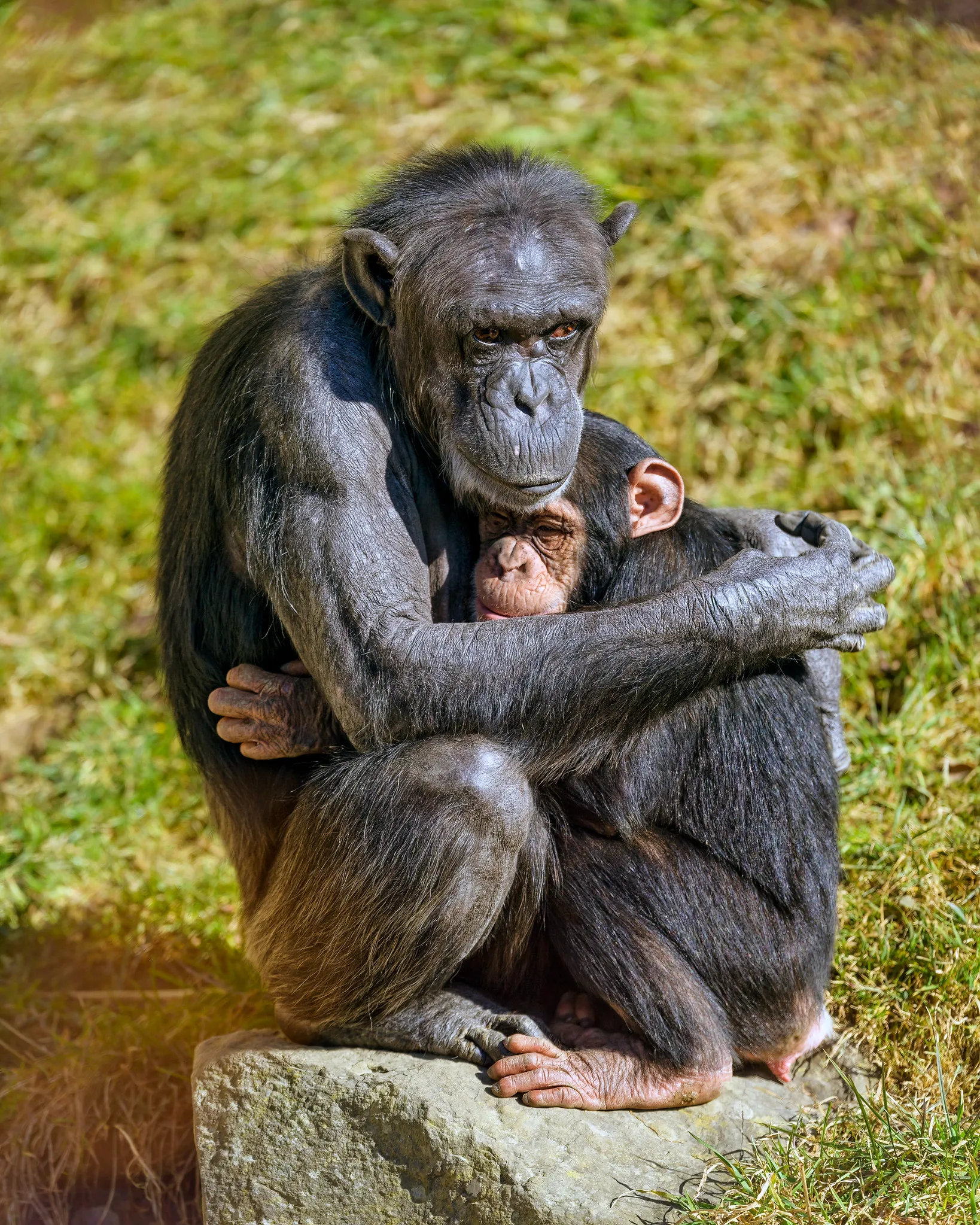
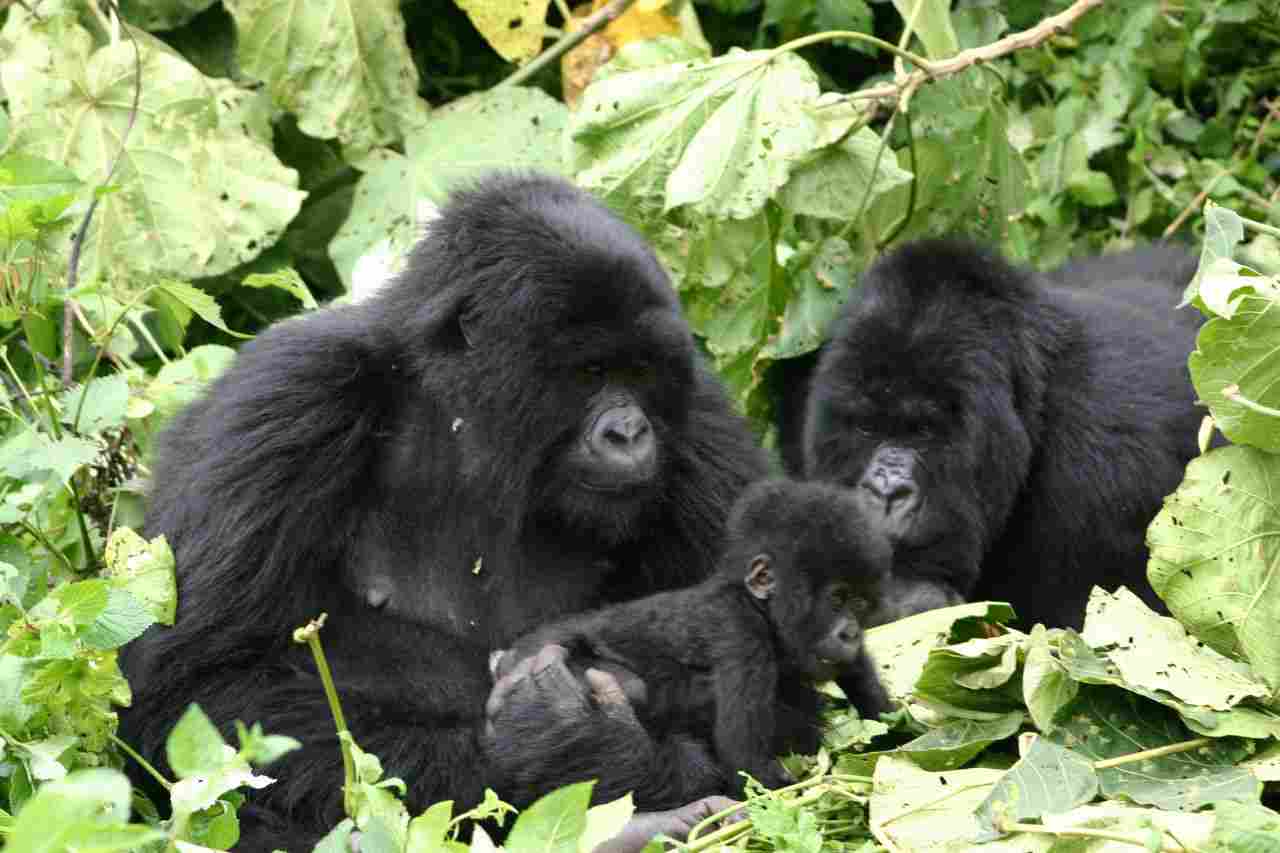
Chimpanzee:
Mothers provide extensive care and protection to infants.
Juveniles rely on their mothers for several years.
Other Apes:
Gorillas exhibit strong maternal care, with females carrying and nursing their offspring.
Orangutans have a long period of maternal care, with offspring staying close to their mothers for an extended time.
Ecological Implications:
Parental behavior influences the survival and well-being of offspring in diverse ecological contexts.
20. Proximity to Human-Inhabited Areas:
Chimpanzee:
May come into close proximity to human settlements, leading to human-wildlife conflicts.
Other Apes:
Proximity varies among species.
Orangutans face habitat encroachment due to agriculture.
Ecological Implications:
Human proximity poses threats such as habitat loss, poaching, and disease transmission, impacting the ecological dynamics of these species.
21. Behavior Toward Humans:

Chimpanzee:
Can exhibit aggressive behavior, especially when feeling threatened.
May display curiosity towards humans.
Other Apes:
Behaviors vary; some may be more reclusive, while others may show curiosity or aggression.
Ecological Implications:
Interactions with humans can have implications for the safety and conservation of these species, influencing their behavior and adaptation to changing environments.
22. Danger Posed to Humans:
Chimpanzee:
Can pose a threat, especially if feeling threatened or provoked.
Known instances of aggressive behavior towards humans.
Other Apes:
Generally not considered as dangerous as chimpanzees.
Gorillas, orangutans, and bonobos are less likely to display aggressive behavior towards humans.
Ecological Implications:
Human encounters with these species can lead to conflicts, impacting both human and ape populations.
23. Associated Precautions:
Chimpanzee:
Caution is advised when in proximity; avoid provoking or cornering them.
Adequate safety measures needed in conservation and research settings.
Other Apes:
Precautions vary but generally involve maintaining a respectful distance.
Conservation efforts should consider human safety and ape well-being.
Ecological Implications:
Implementing precautions is essential to ensure the safety of both humans and apes and to promote coexistence in shared environments.
24. Conservation Status:

Chimpanzee:
Generally listed as endangered due to habitat loss, hunting, and disease.
Conservation efforts focus on protecting their habitats and preventing illegal trade.
Other Apes:
Conservation statuses vary among species.
Gorillas, orangutans, and bonobos face threats such as habitat destruction and poaching.
Ecological Implications:
Conservation efforts are crucial to maintaining biodiversity, preserving ecosystems, and ensuring the survival of these ecologically significant species.
*Summary of Comparison
Taxonomy:
Chimpanzees and other apes share the Hominidae family but differ at the genus and species levels.
Appearance:
Chimpanzees have coarse black hair, while other apes like gorillas and orangutans exhibit diverse physical characteristics.
Size:
Chimpanzees are smaller, with males around 3 to 4 feet tall, while gorillas and orangutans can be significantly larger.
Weight:
Chimpanzee males weigh around 40 to 70 kg, contrasting with gorillas that can reach up to 200 kg.
Bite Force (PSI):
Chimpanzees have an estimated bite force of 1,200 to 1,500 PSI, critical for their omnivorous diet.
Physical Offensive Advantages:
Chimpanzees utilize canines and agility, while gorillas rely on powerful physique for offense.
Physical Defensive Advantages:
Chimpanzees employ agility and group defense, while gorillas use strength and intimidating displays.
Speed:
Chimpanzees can reach speeds of up to 40 km/h, contrasting with the deliberate movement of orangutans.
Agility:
Chimpanzees demonstrate exceptional agility, crucial for their arboreal and terrestrial locomotion.
Senses:
Both chimpanzees and other apes have well-developed senses adapted to their ecological niches.
Overall Physical Capacity:
Chimpanzees exhibit high endurance, problem-solving skills, and tool use.
Habitat Preference(s) and Geographic Region:
Chimpanzees inhabit tropical rainforests and savannas in Central and West Africa, while other apes have diverse habitats.
Tracks:
Tracking provides insights into movement patterns, social structure, and terrain adaptation for both chimpanzees and other apes.
Lifespan:
Lifespan varies, with chimpanzees living around 40 to 50 years, and gorillas up to 35 to 40 years in the wild.
Mode of Feeding:
Chimpanzees are omnivores, while gorillas are primarily herbivores.
Intelligence:
Chimpanzees are highly intelligent, exhibiting problem-solving and tool-use abilities.
Social Behavior:
Chimpanzees live in complex hierarchical social groups, while other apes have diverse social structures.
Mode of Reproduction:
Chimpanzees have a polygamous mating system, while gorillas may have a polygynous system.
Parental Behavior:
Both chimpanzees and other apes exhibit strong maternal care and protection.
Proximity to Human-Inhabited Areas:
Chimpanzees may come into close proximity, leading to human-wildlife conflicts, similar to other apes facing habitat encroachment.
Behavior Toward Humans:
Both chimpanzees and other apes can display a range of behaviors toward humans, influenced by various factors.
Danger Posed to Humans:
Chimpanzees can pose a threat if provoked, while other apes are generally less dangerous.
Associated Precautions:
Precautions involve maintaining a respectful distance, ensuring safety in both human and ape interactions.
Conservation Status:
Chimpanzees are generally listed as endangered, with other apes facing threats such as habitat destruction and poaching.
Conclusion
I). Similarities:
Shared evolutionary history within the Hominidae family.
Face common threats such as habitat loss, poaching, and human-wildlife conflicts.
II). Differences:
Diverse ecological adaptations, behaviors, and roles within their respective habitats.
Varying conservation statuses and specific challenges unique to each species.
